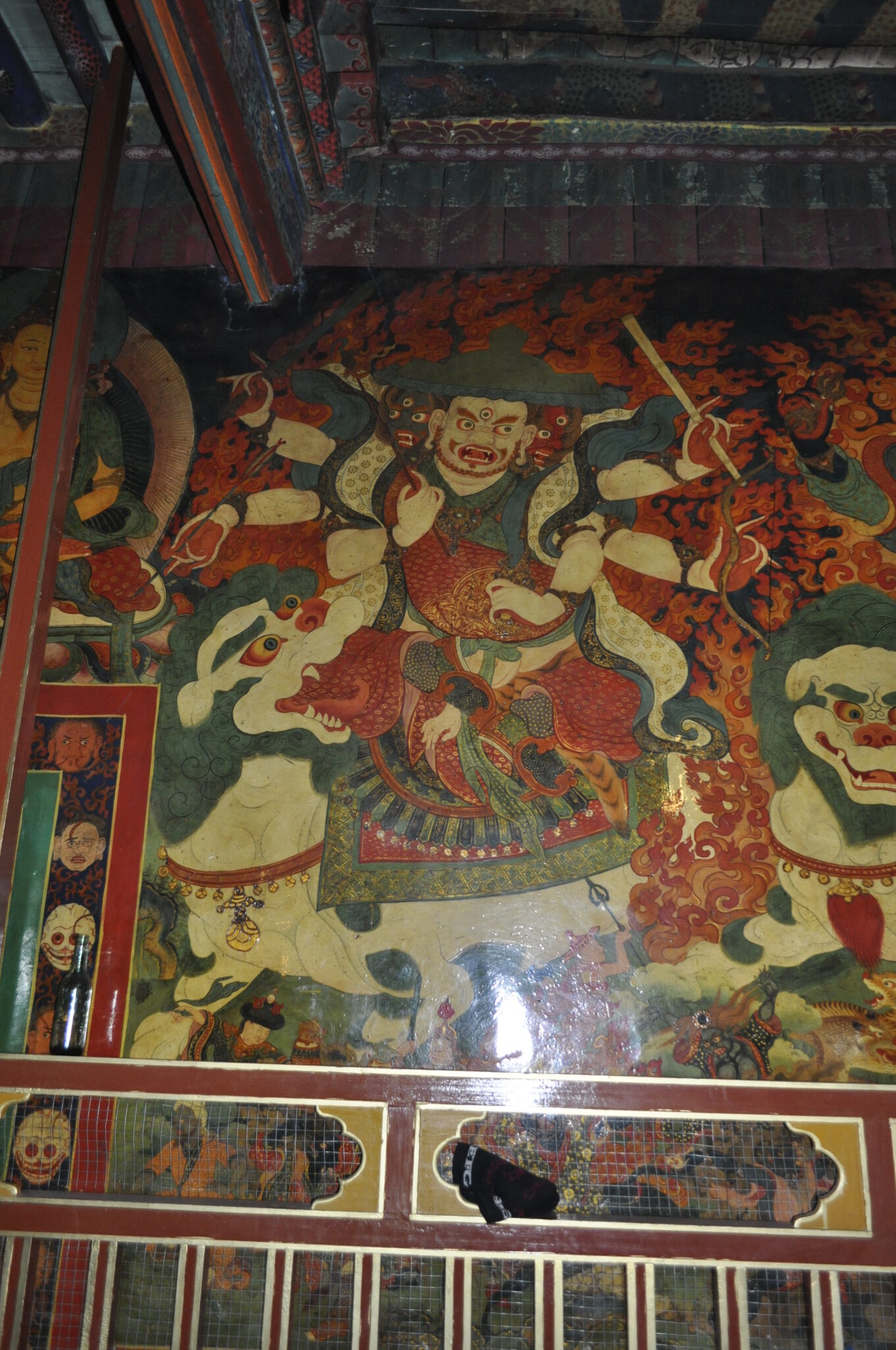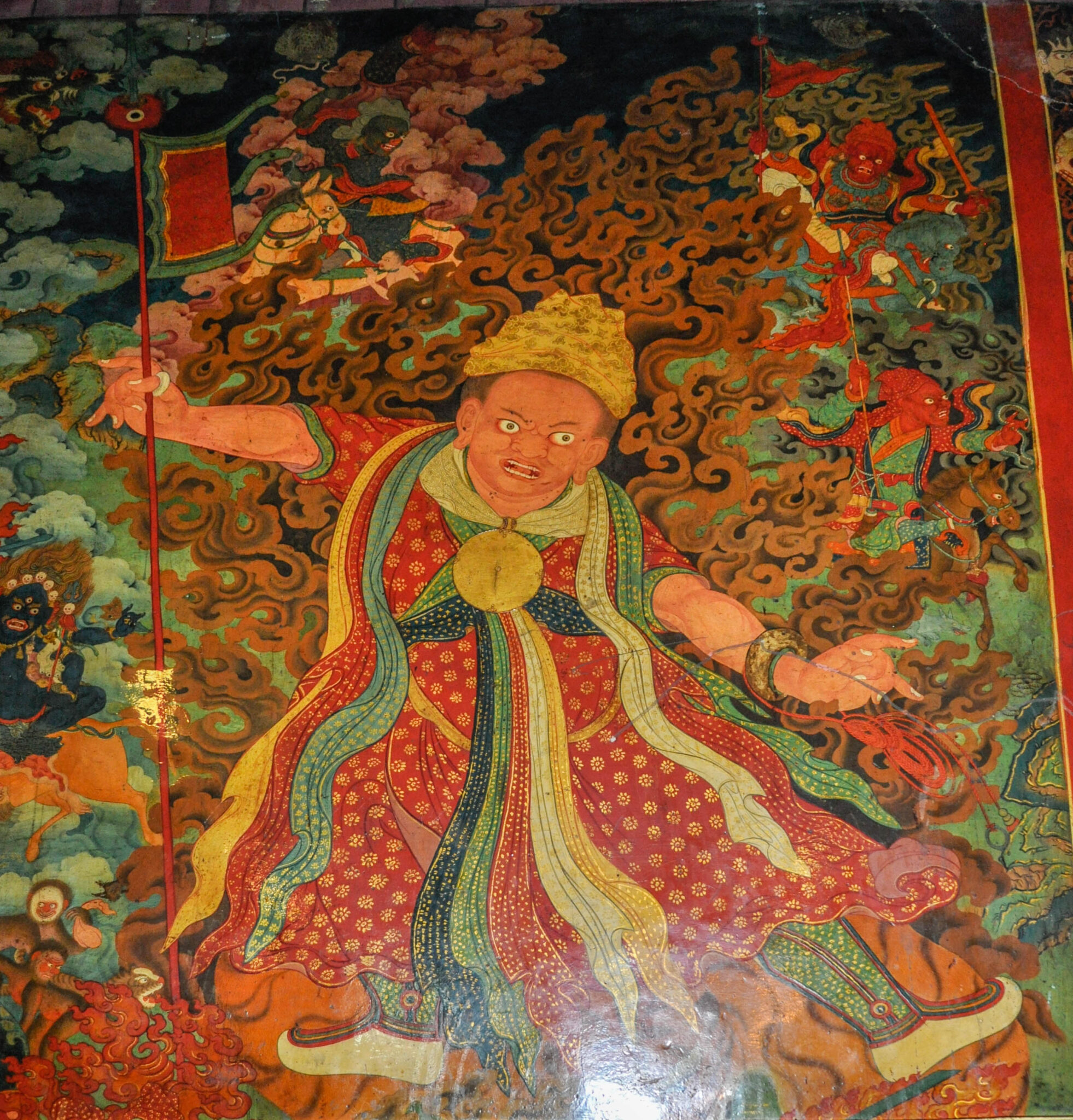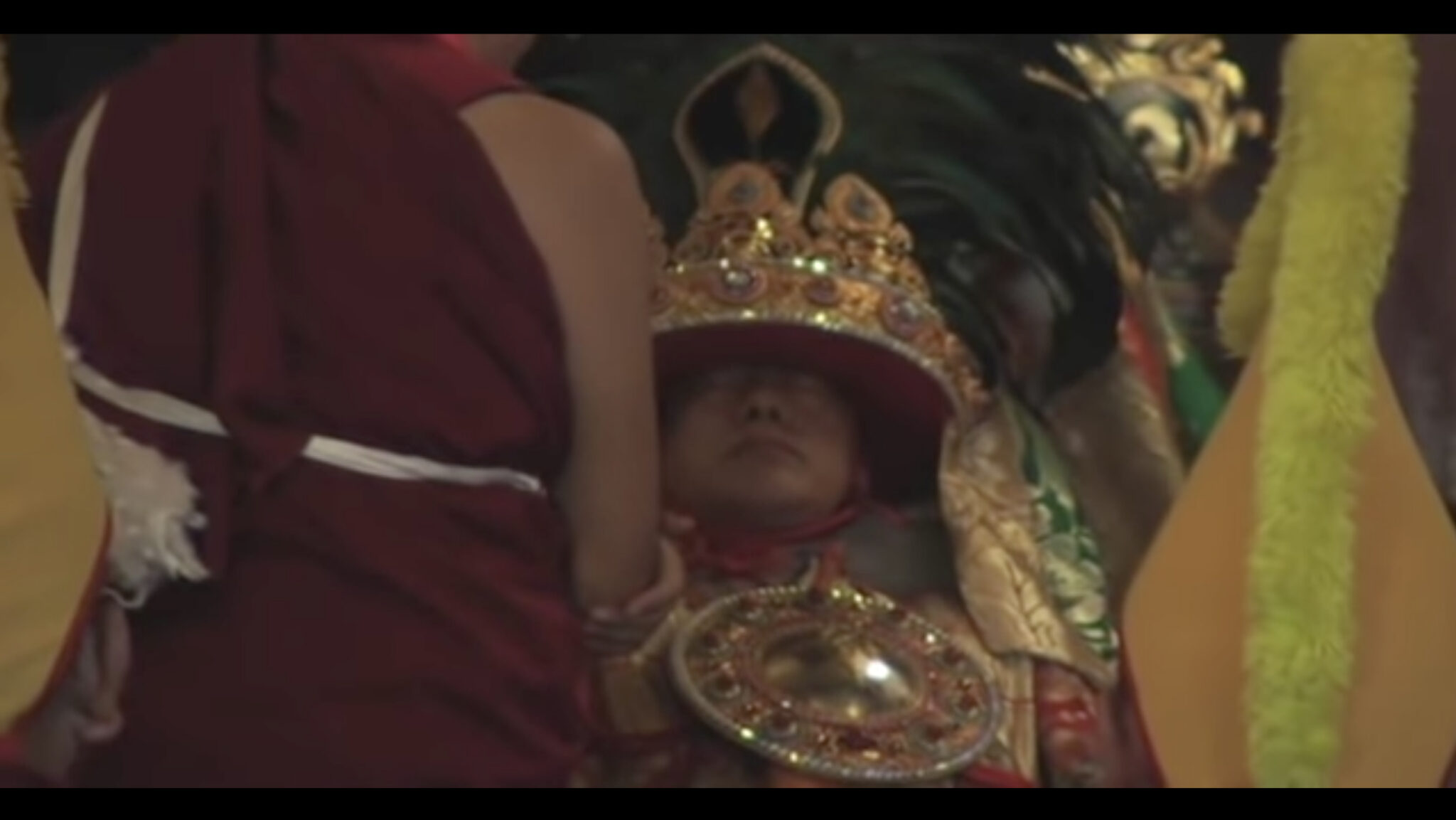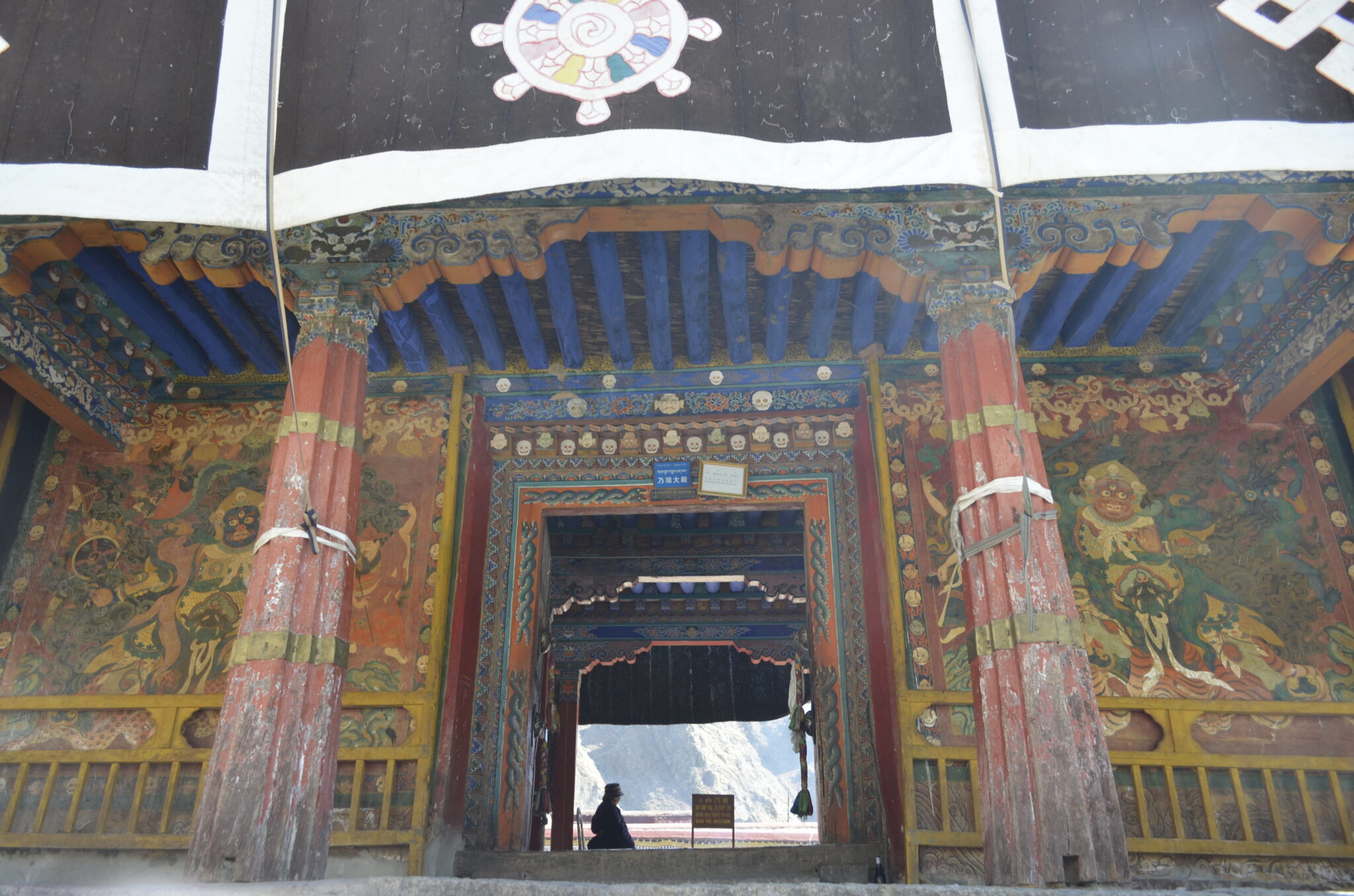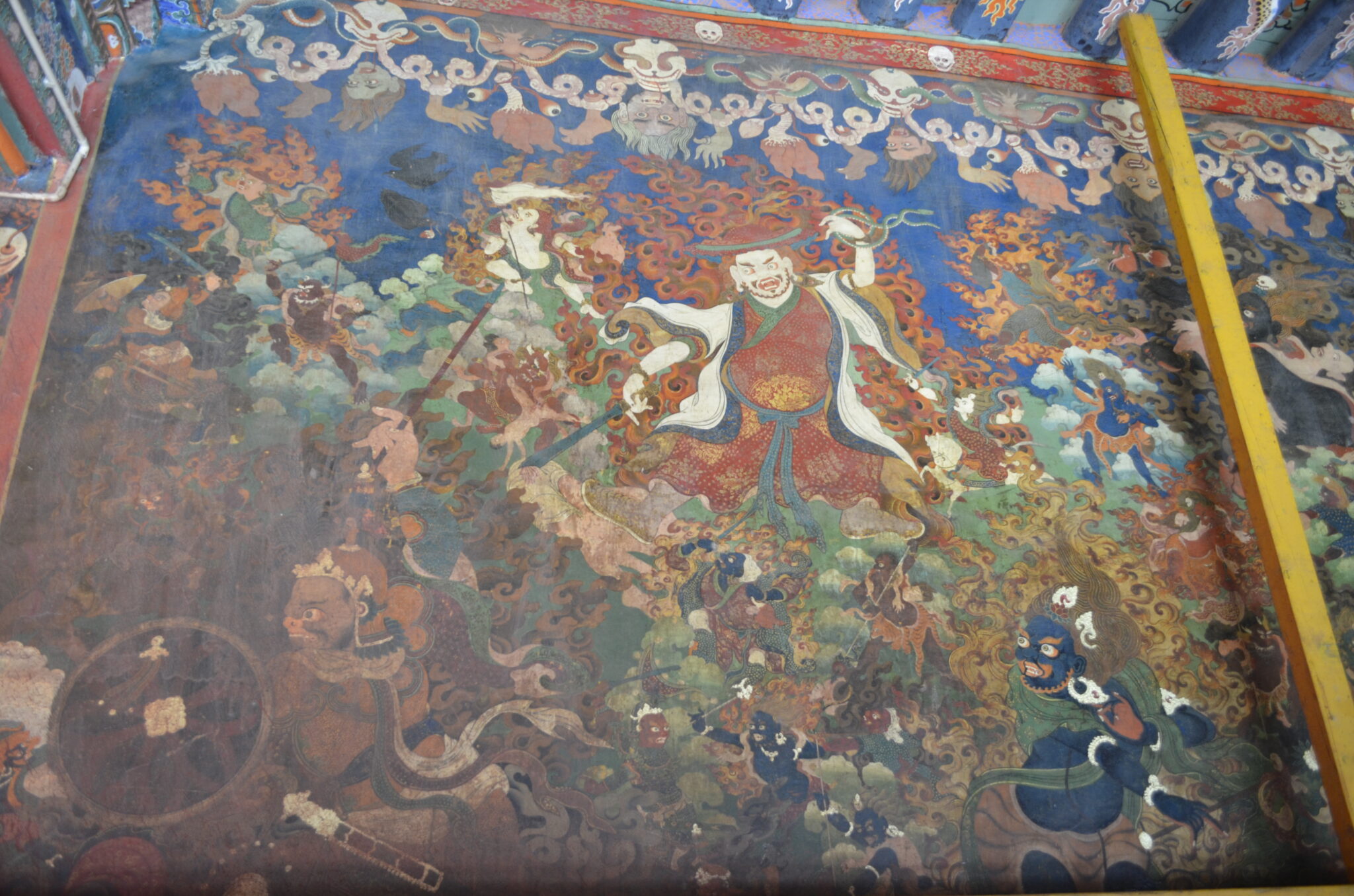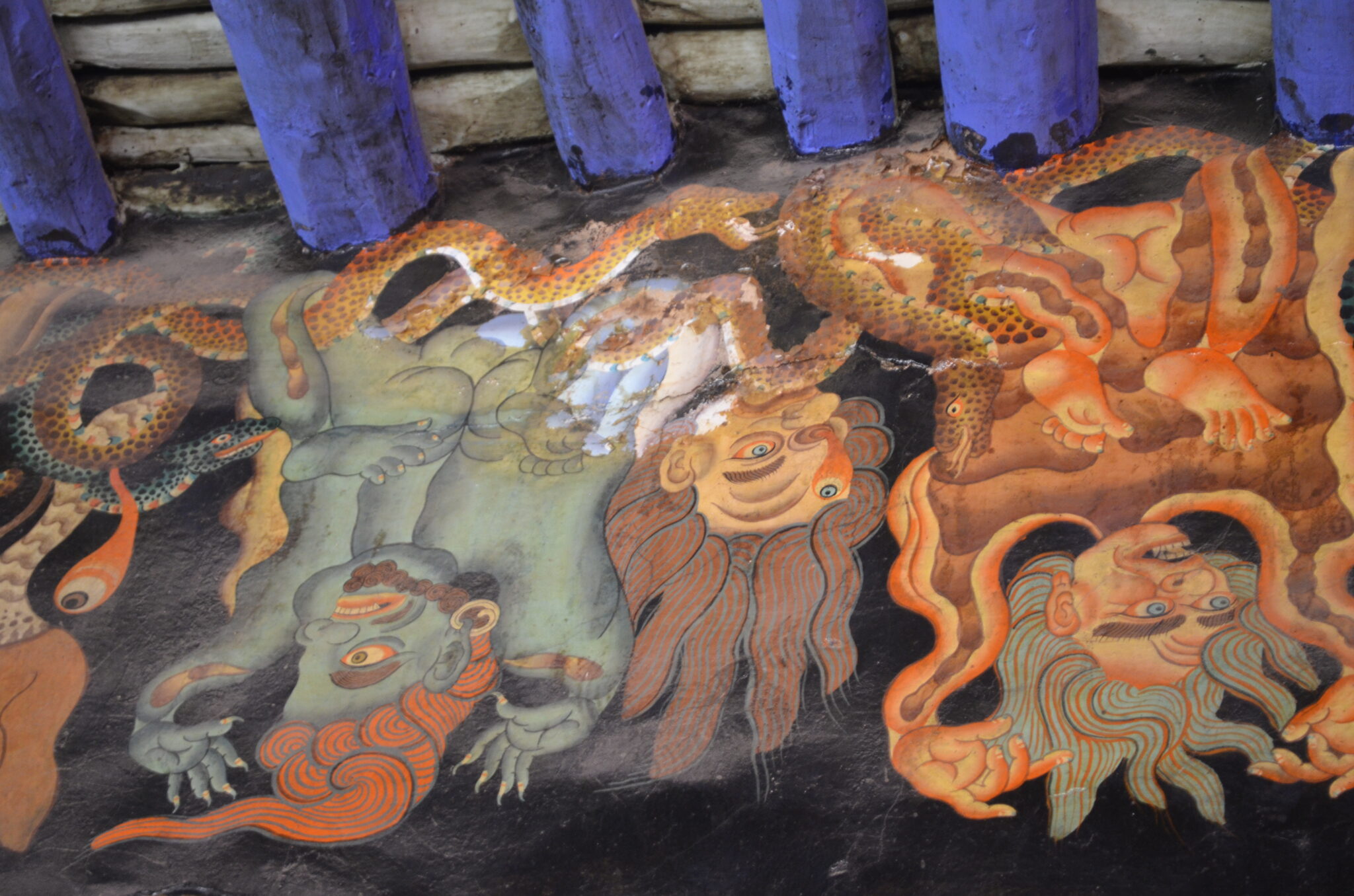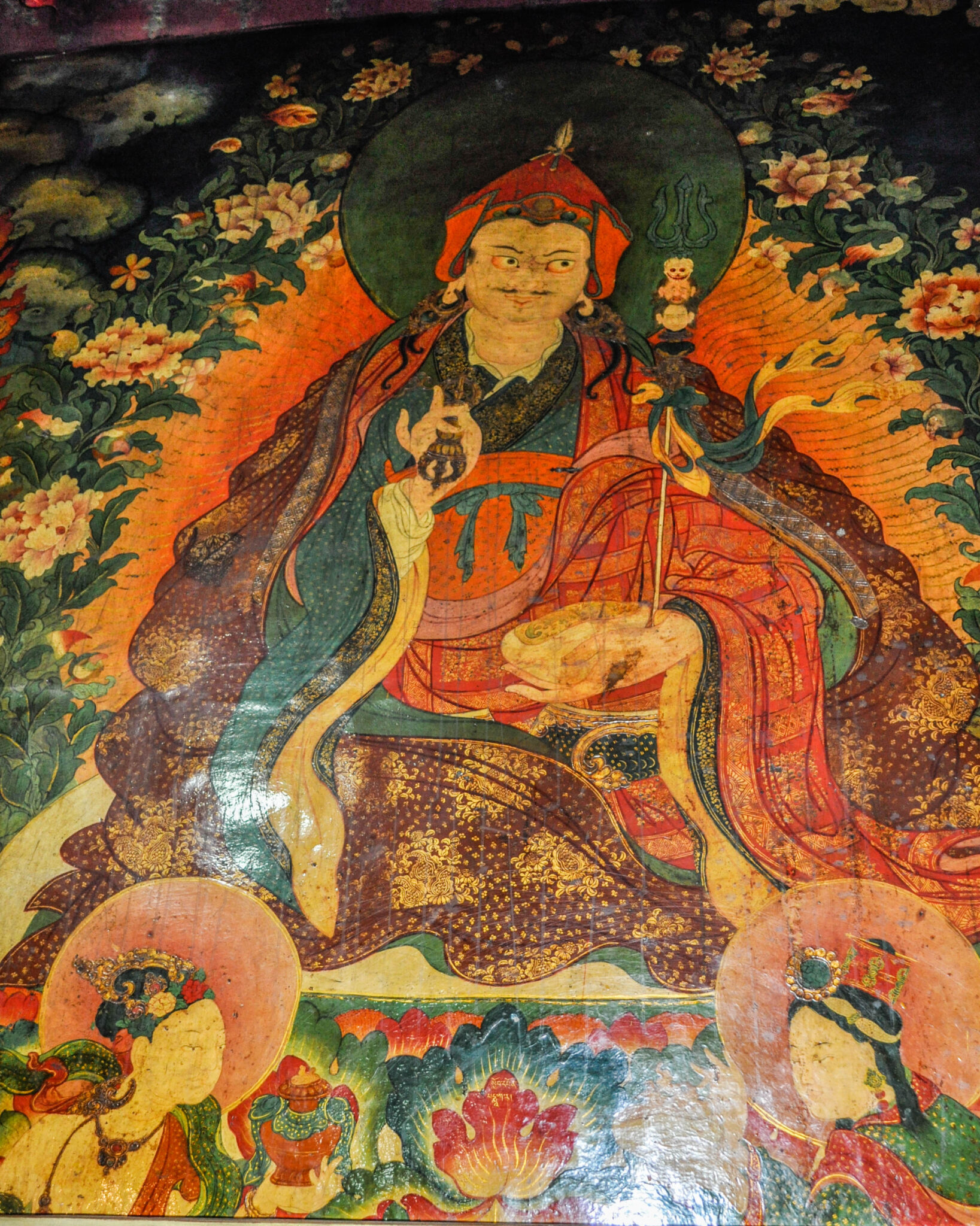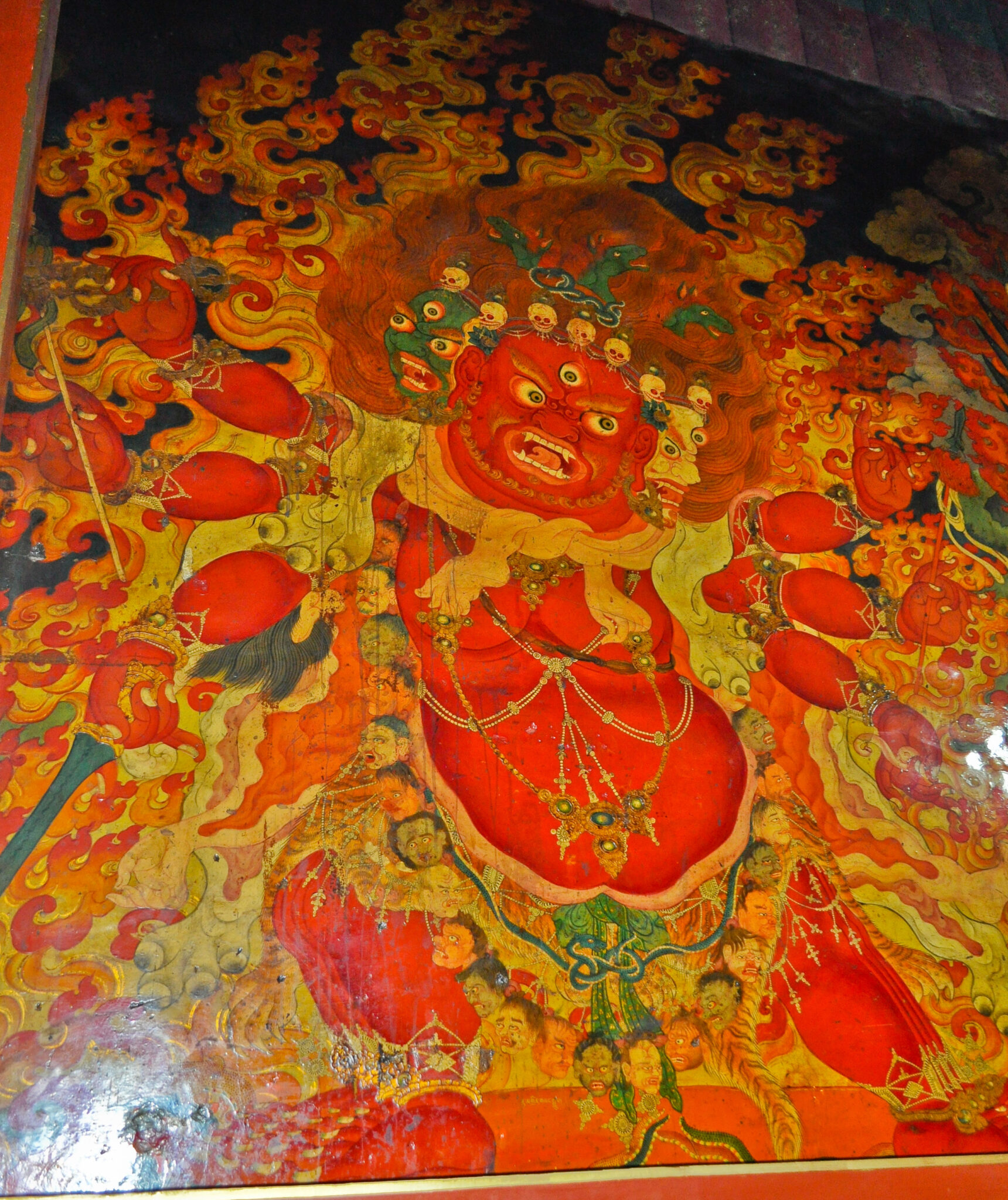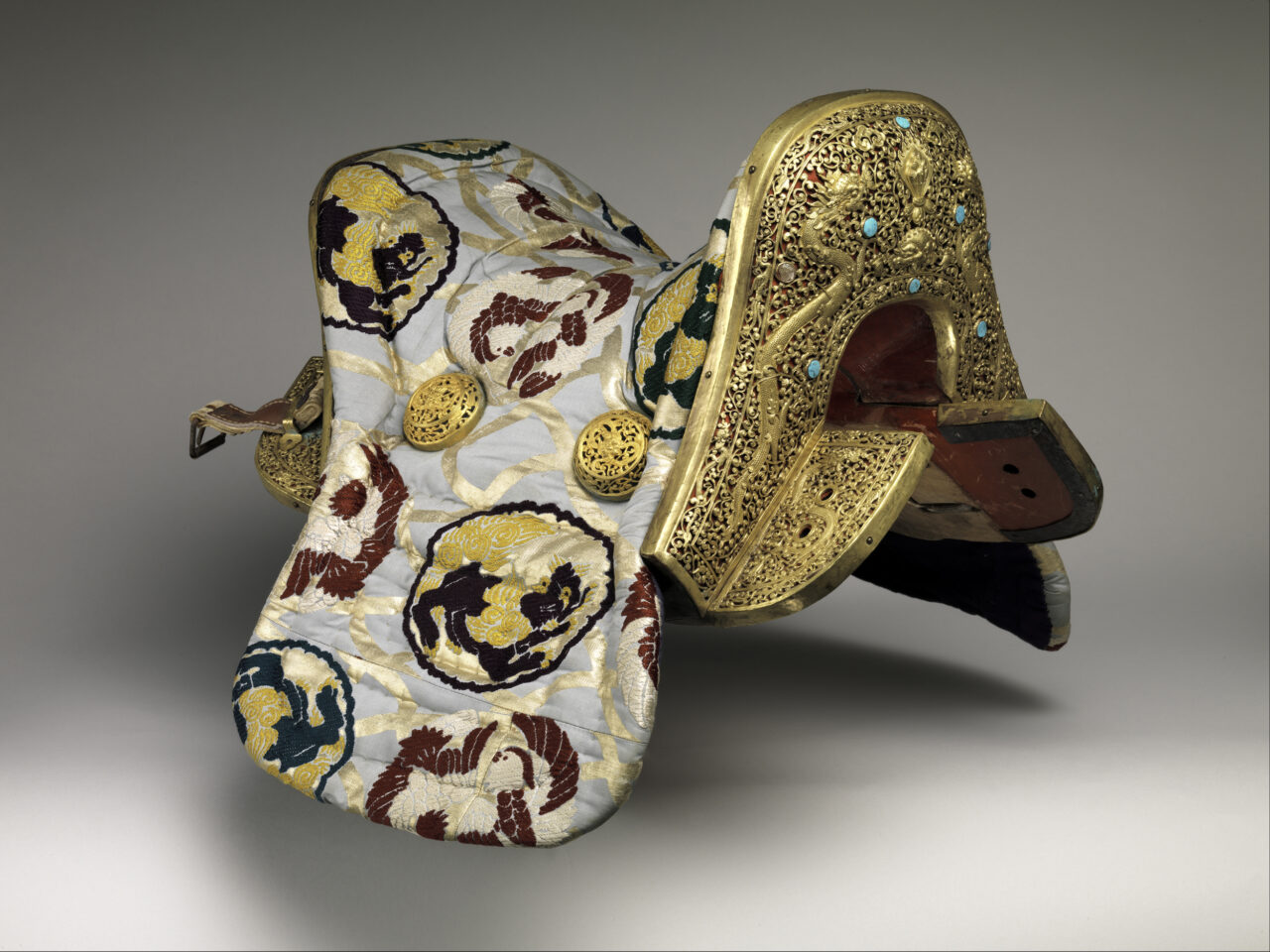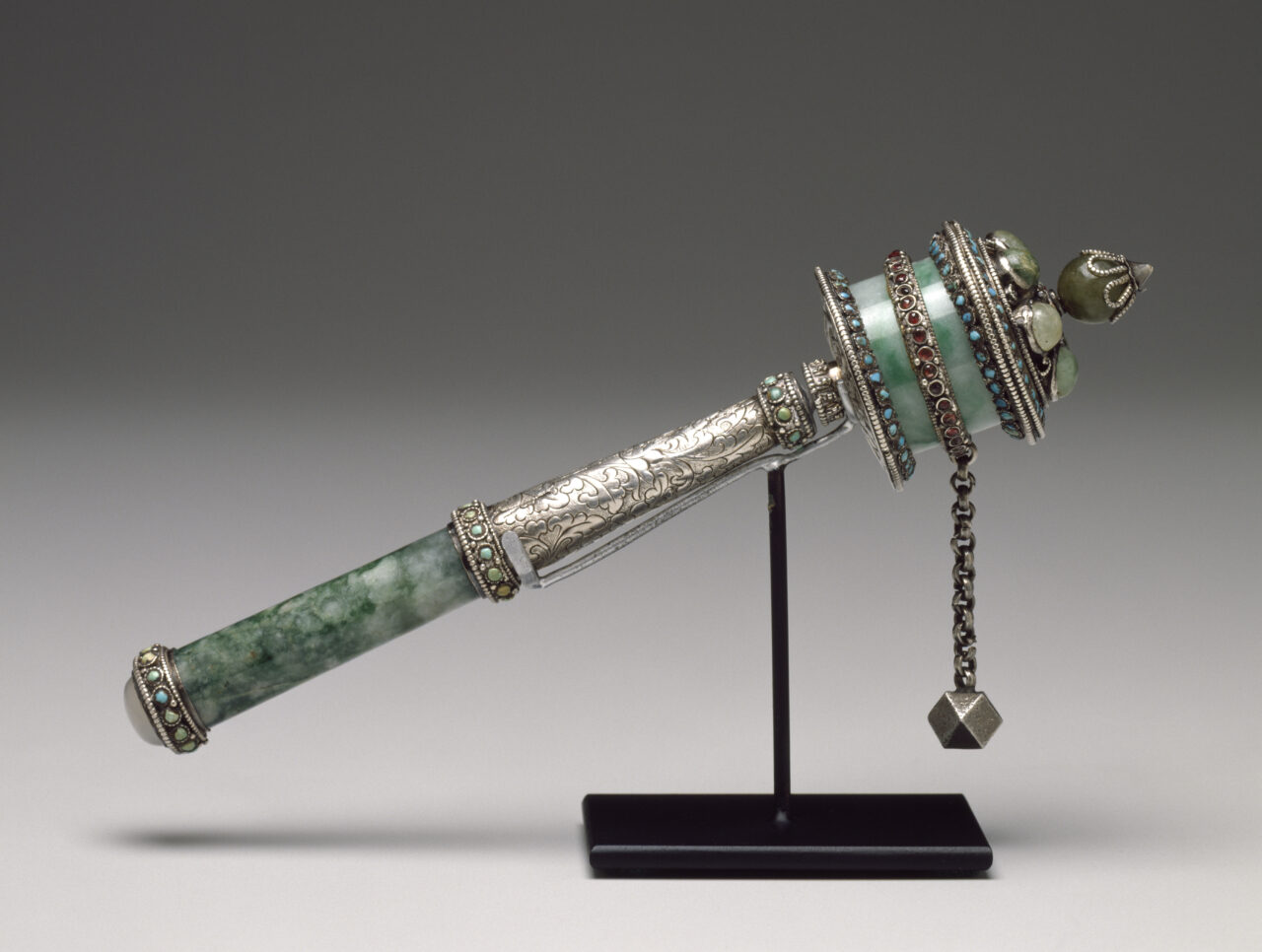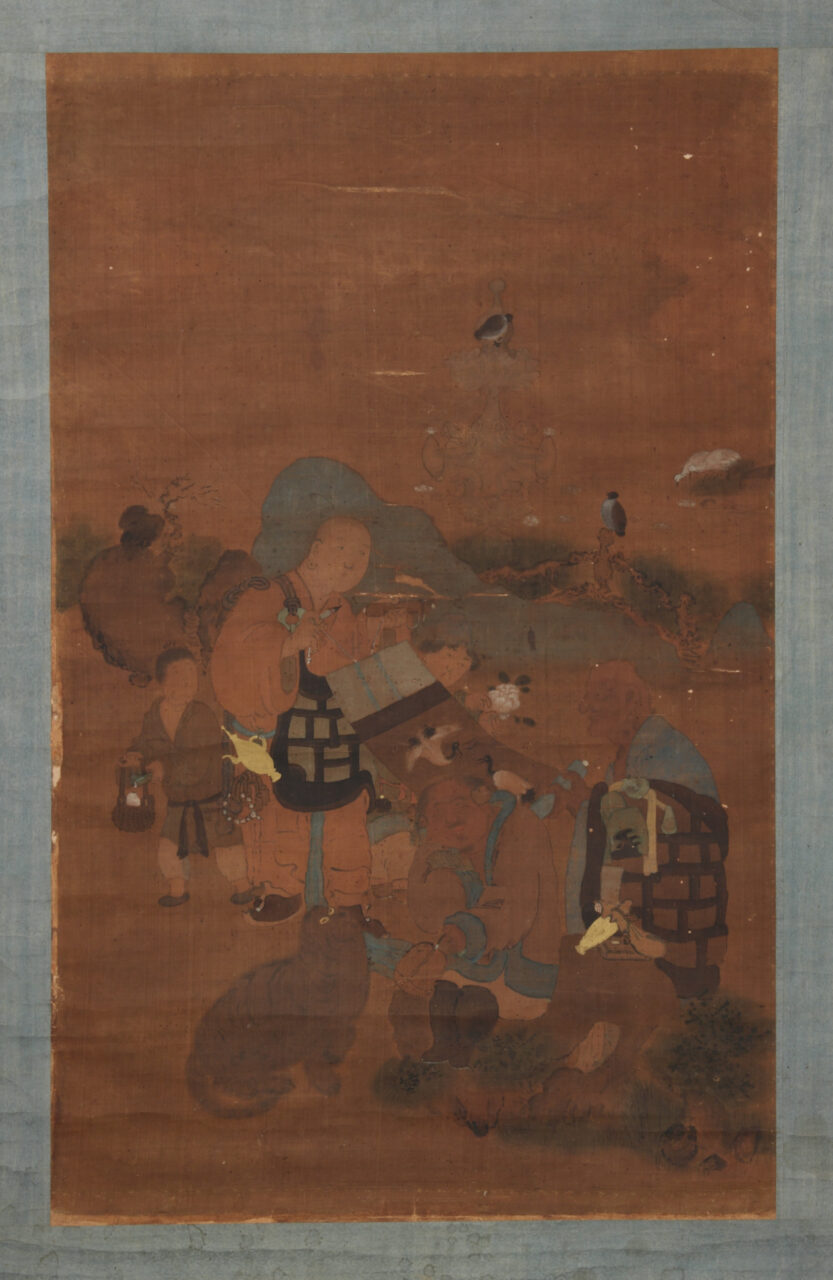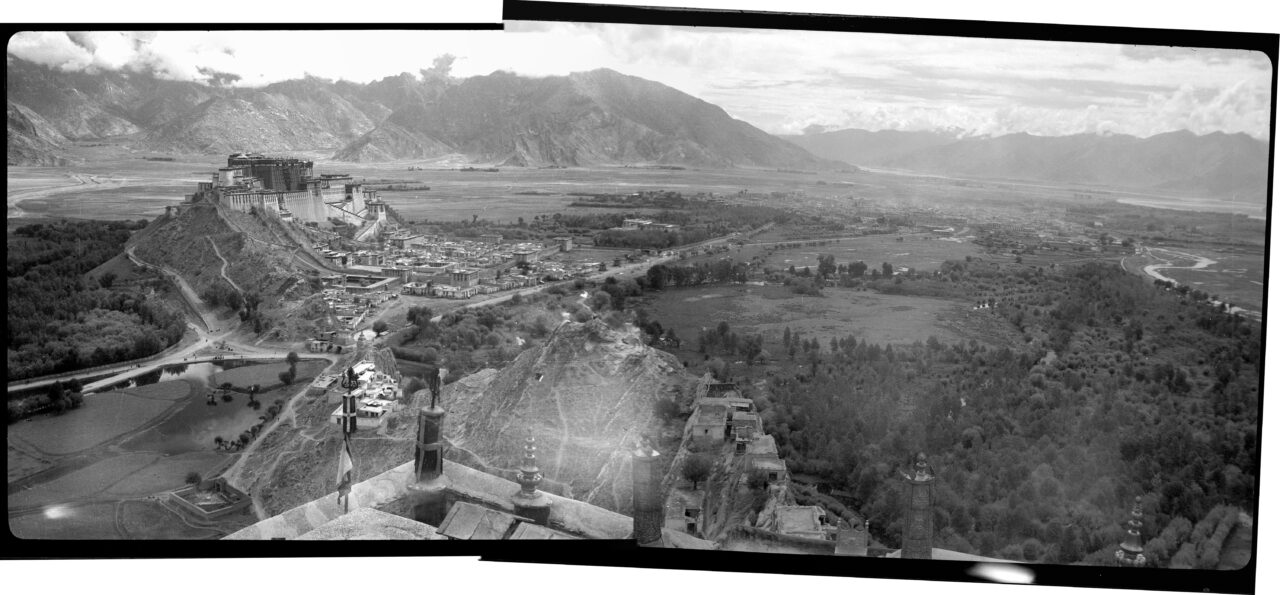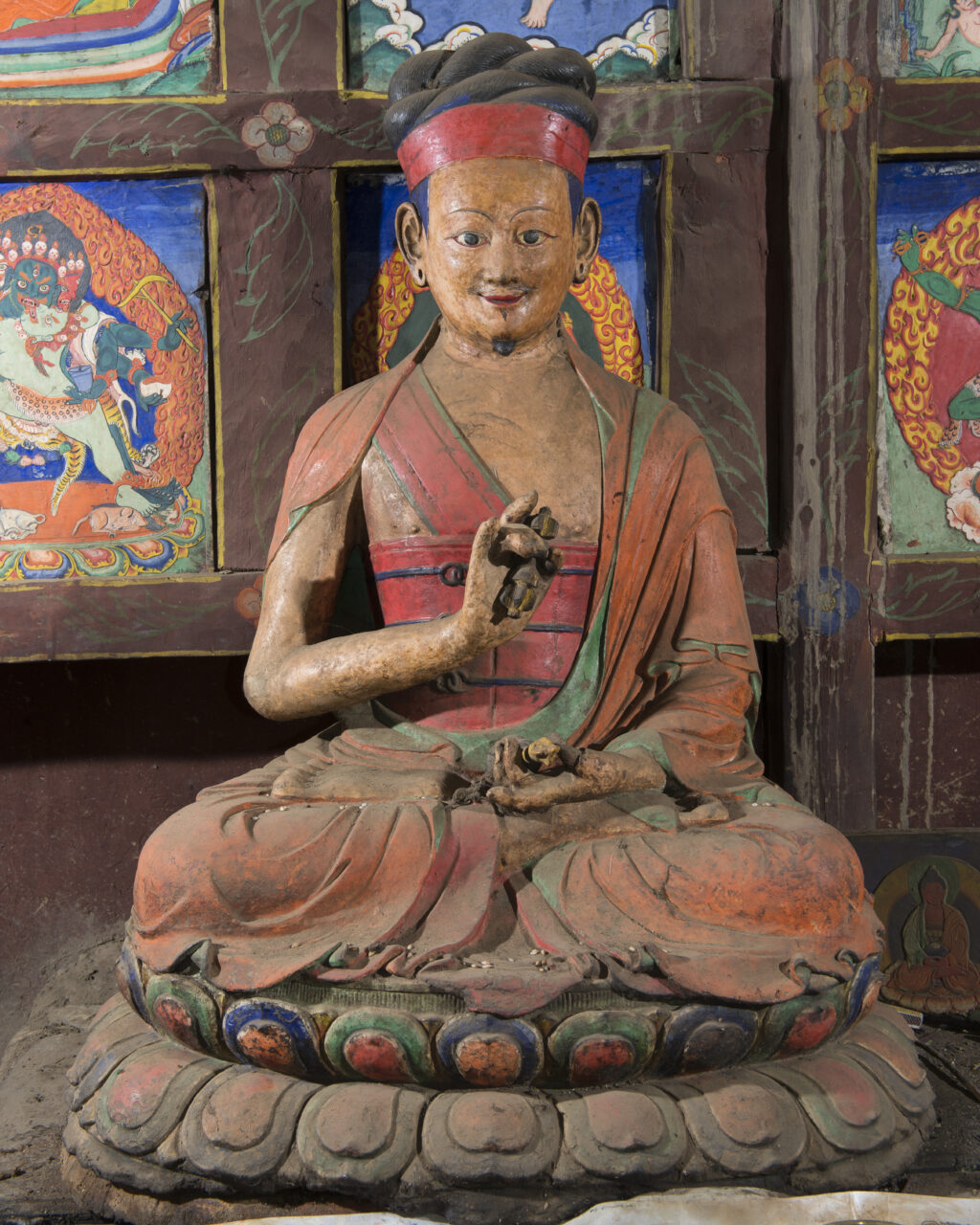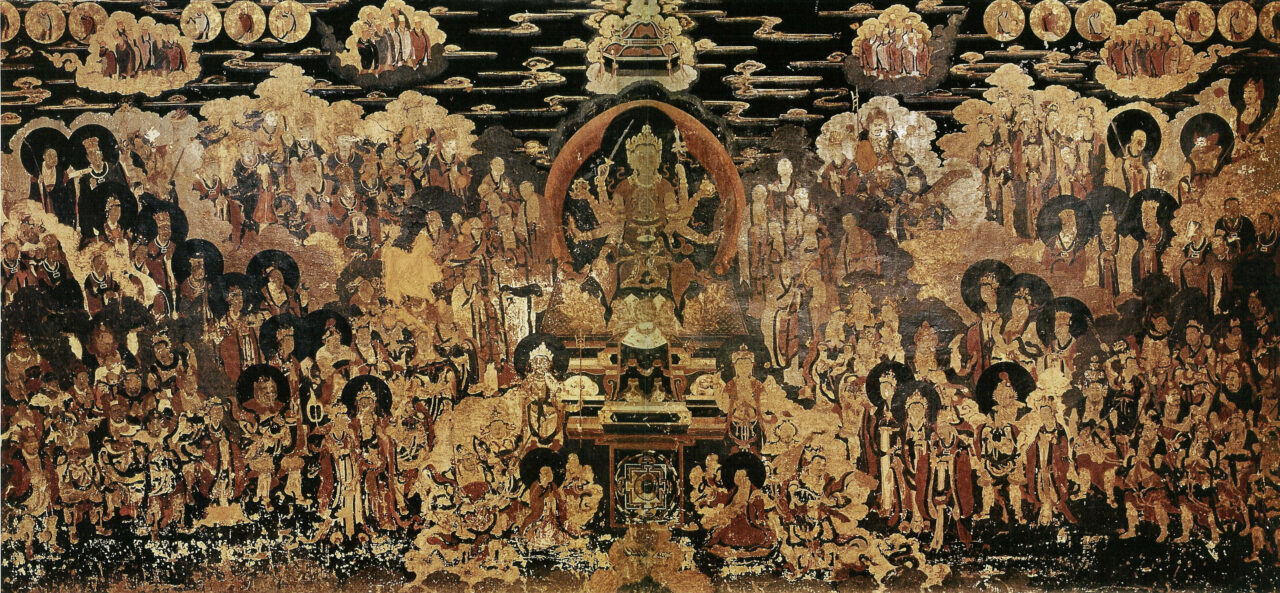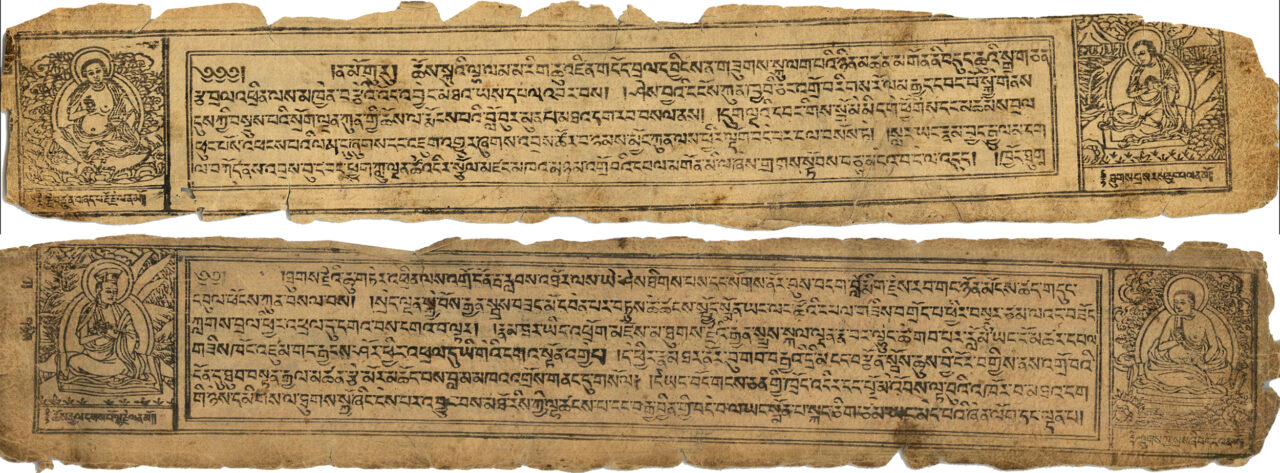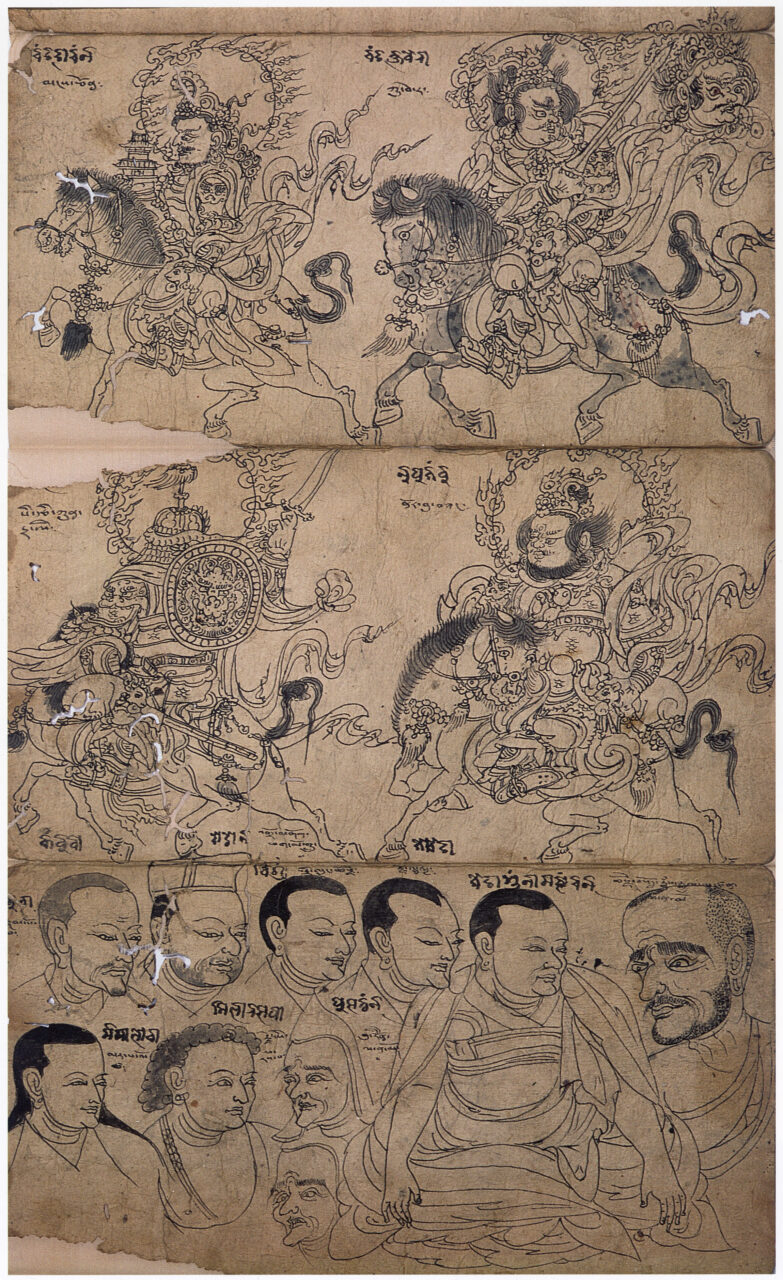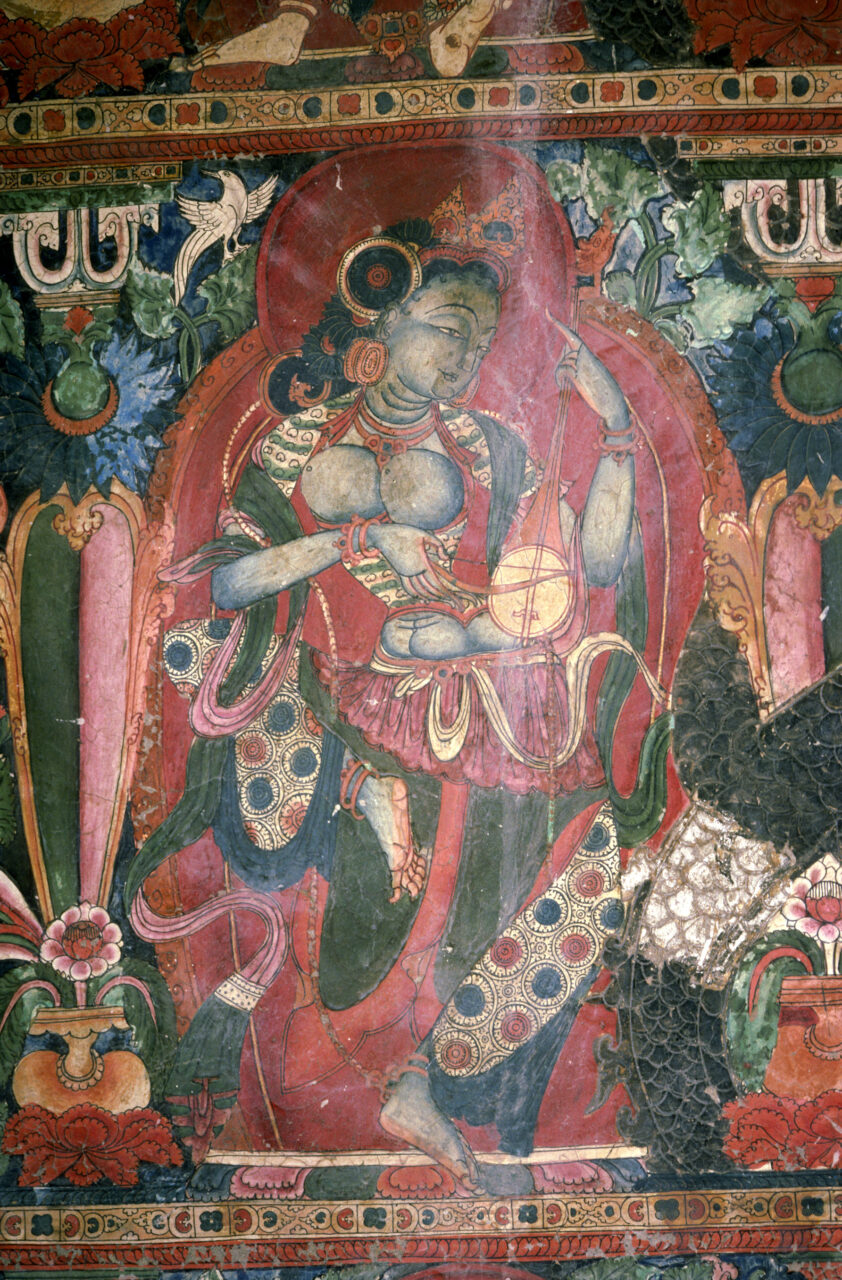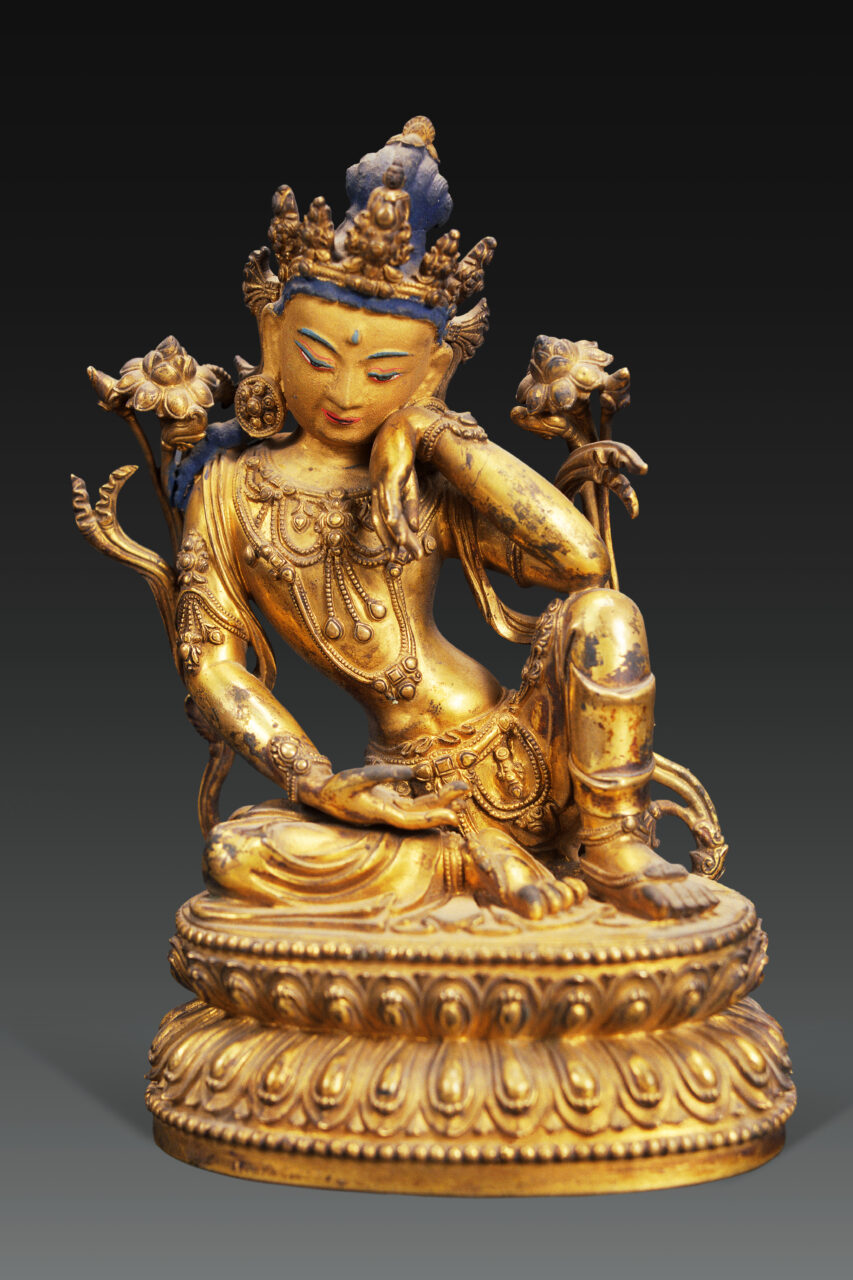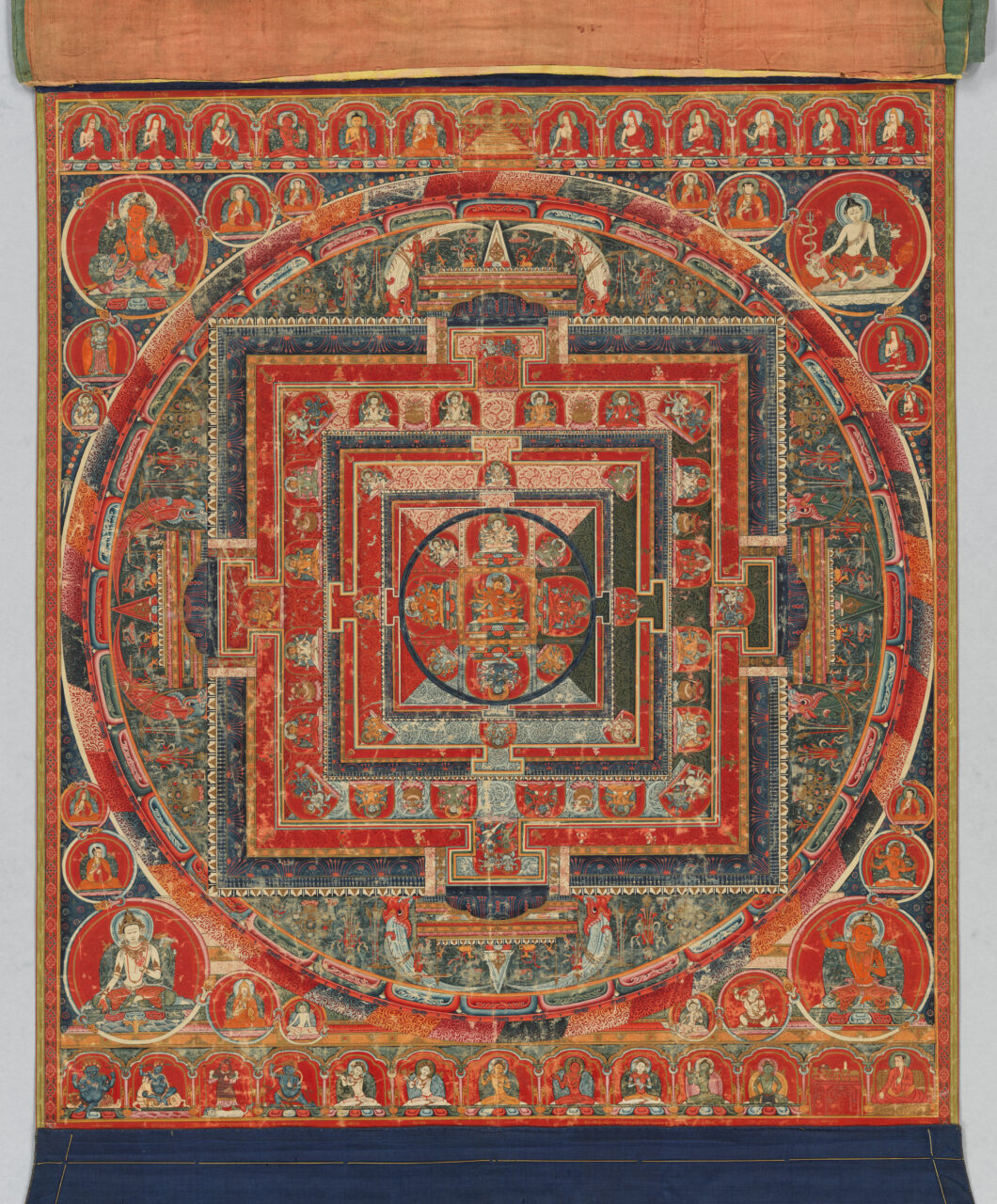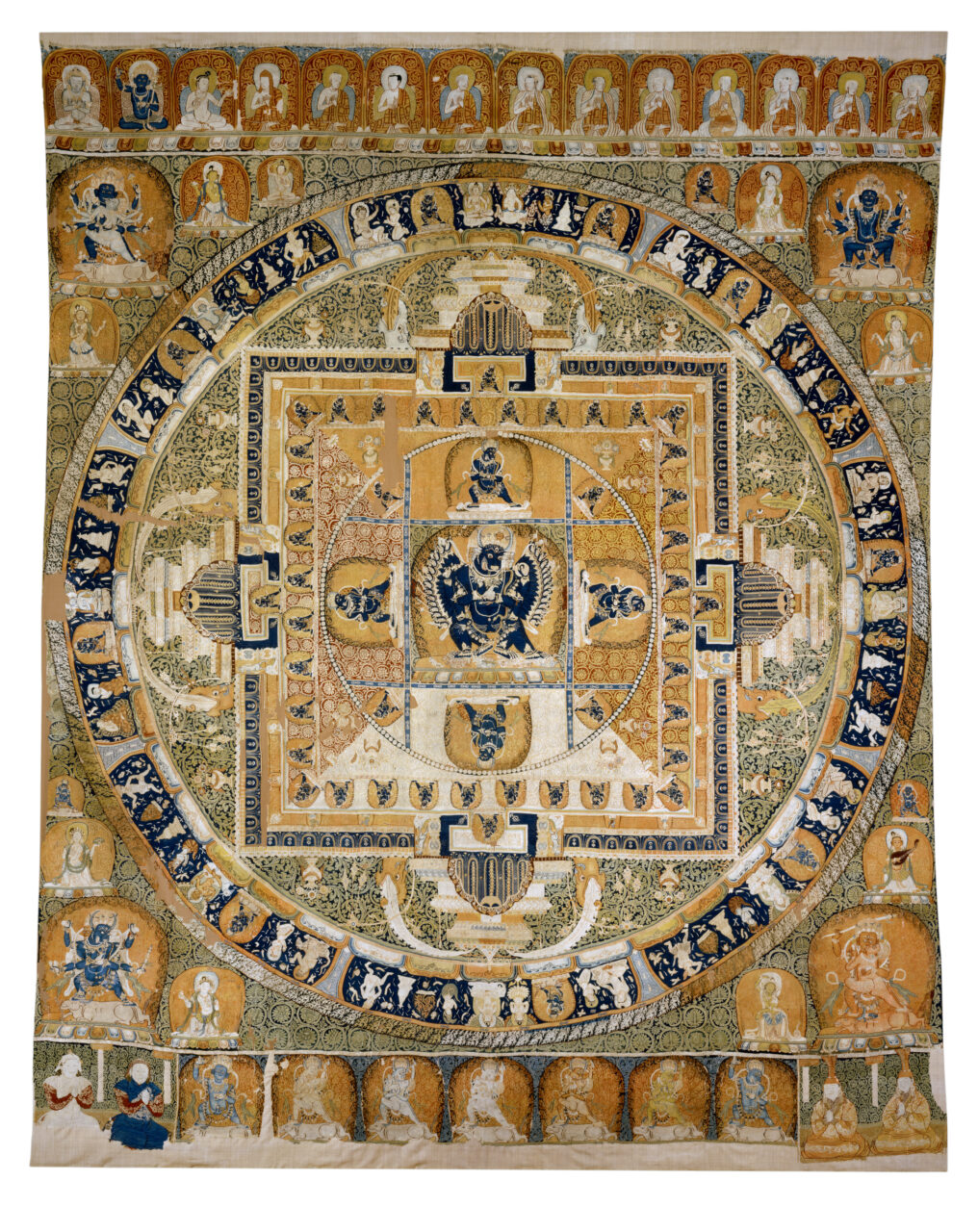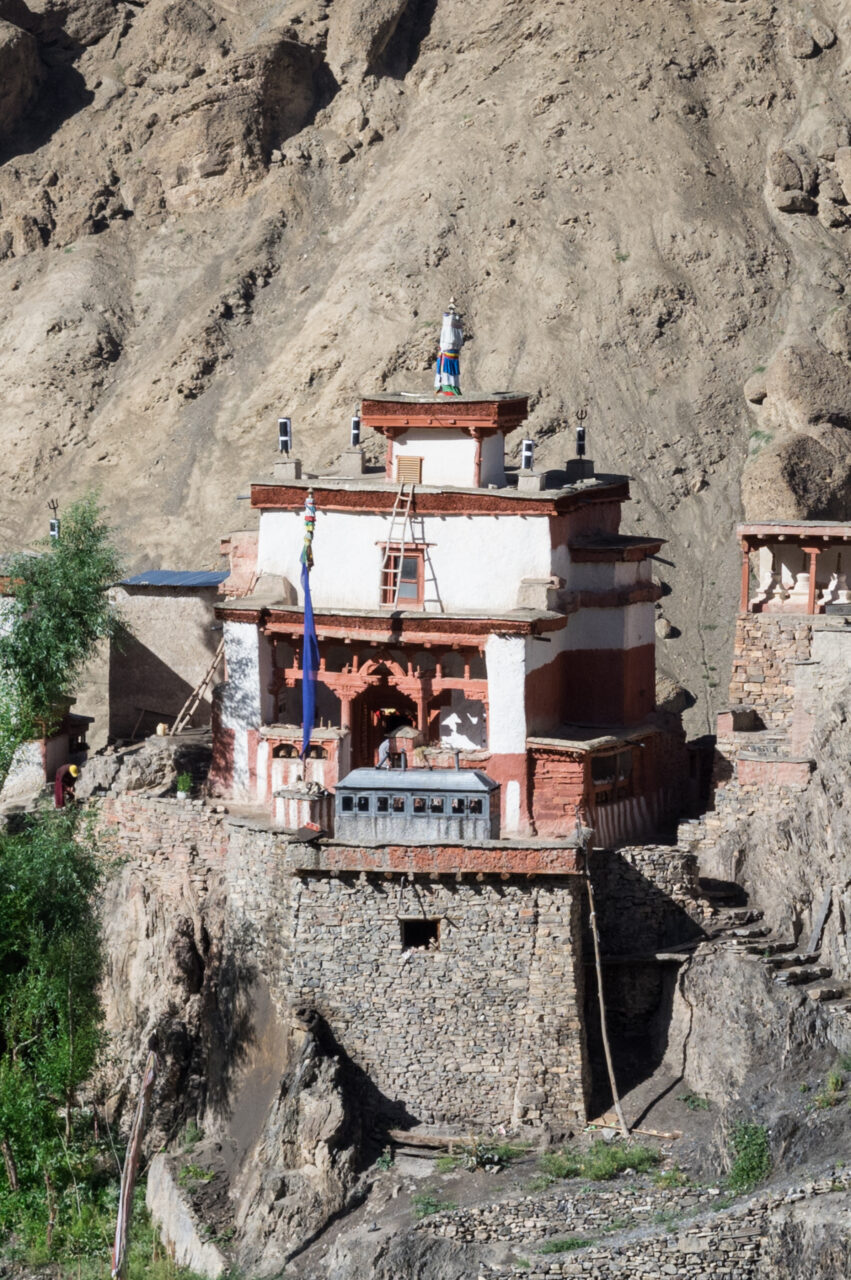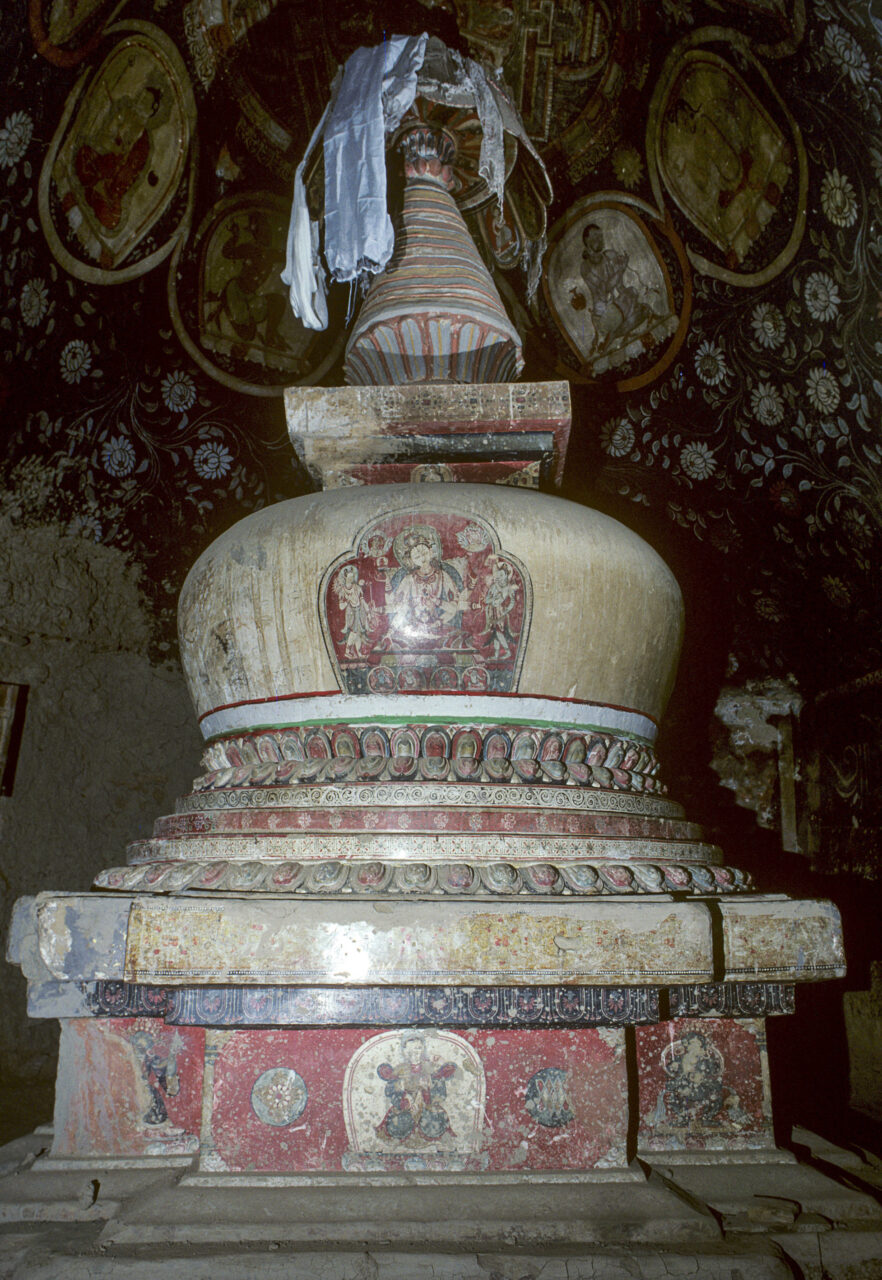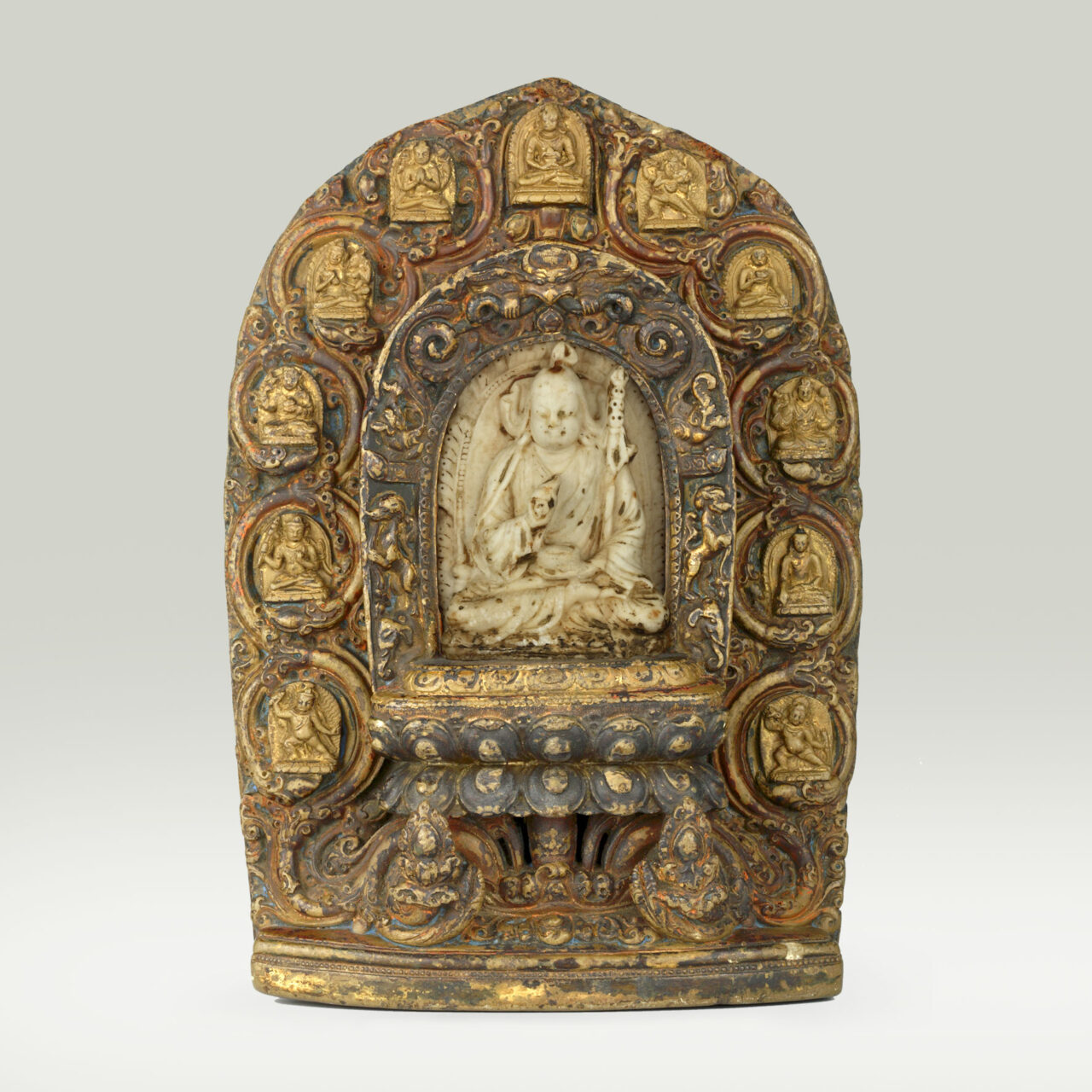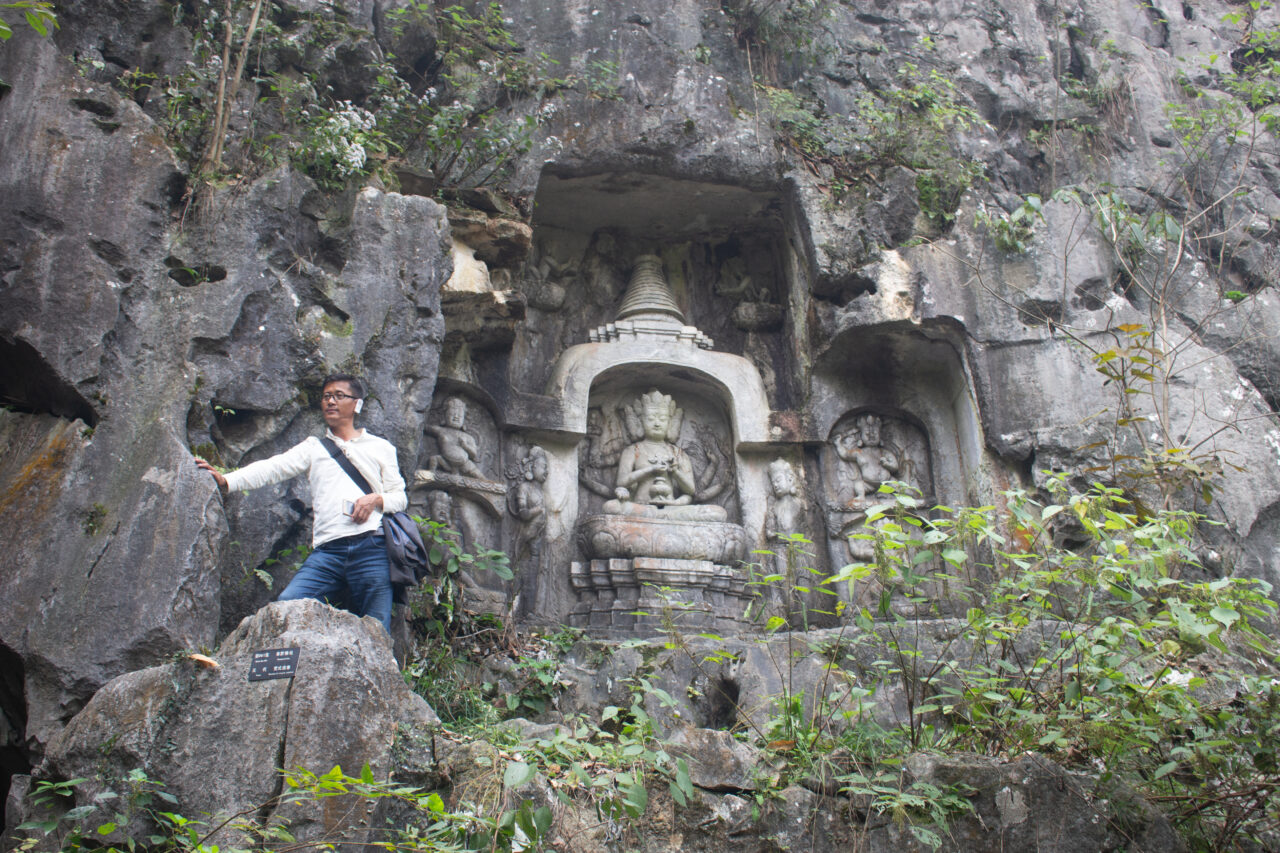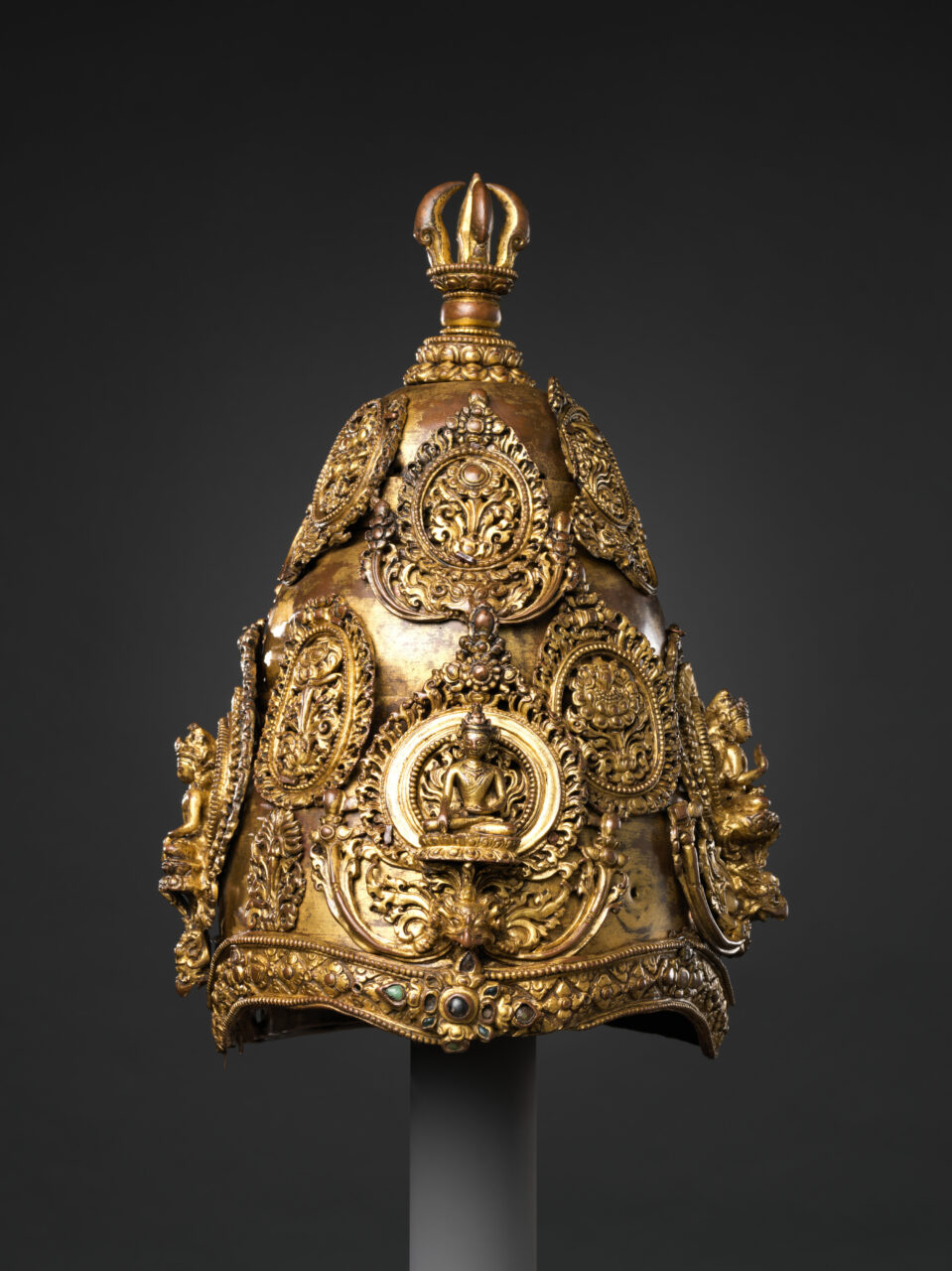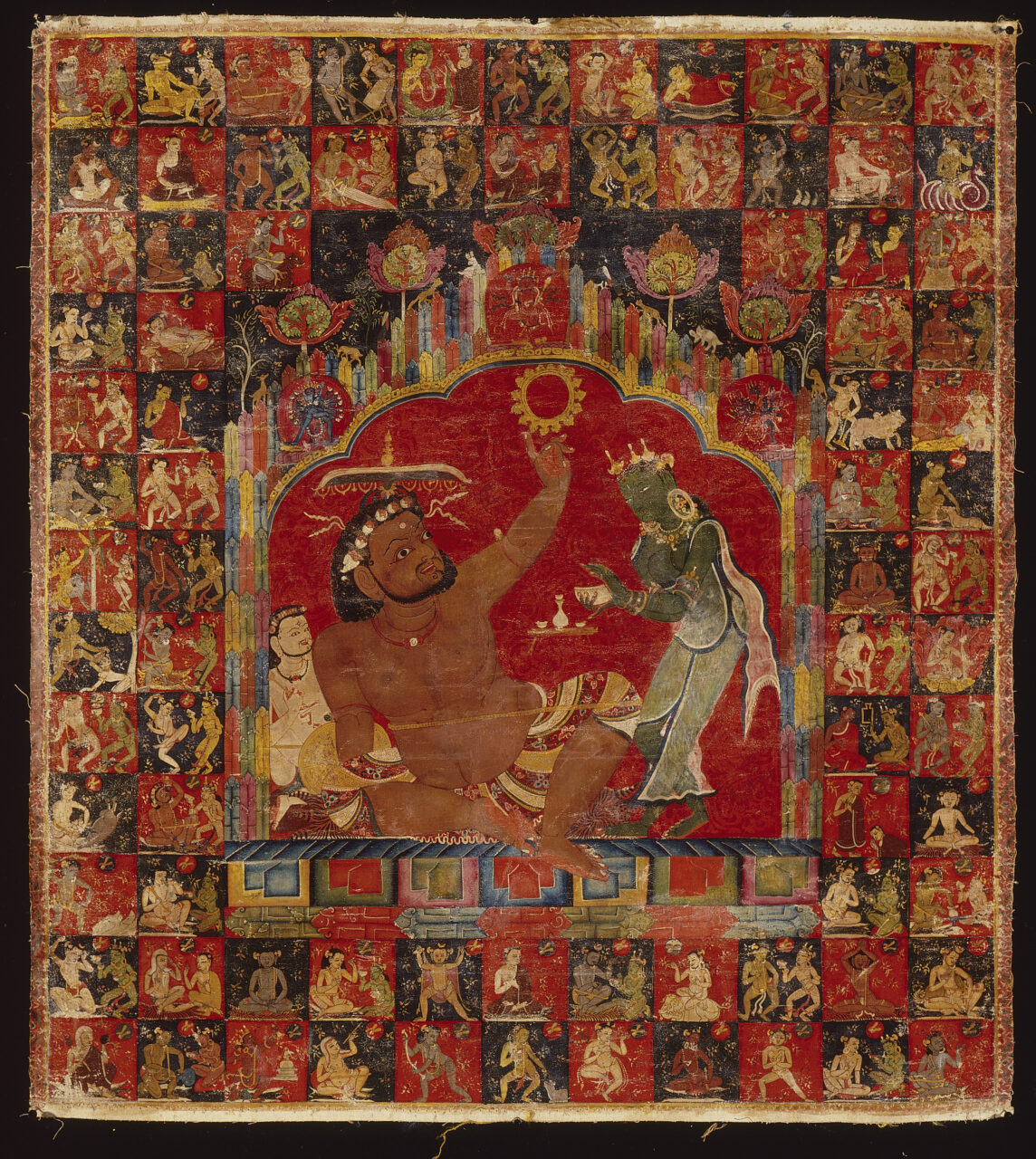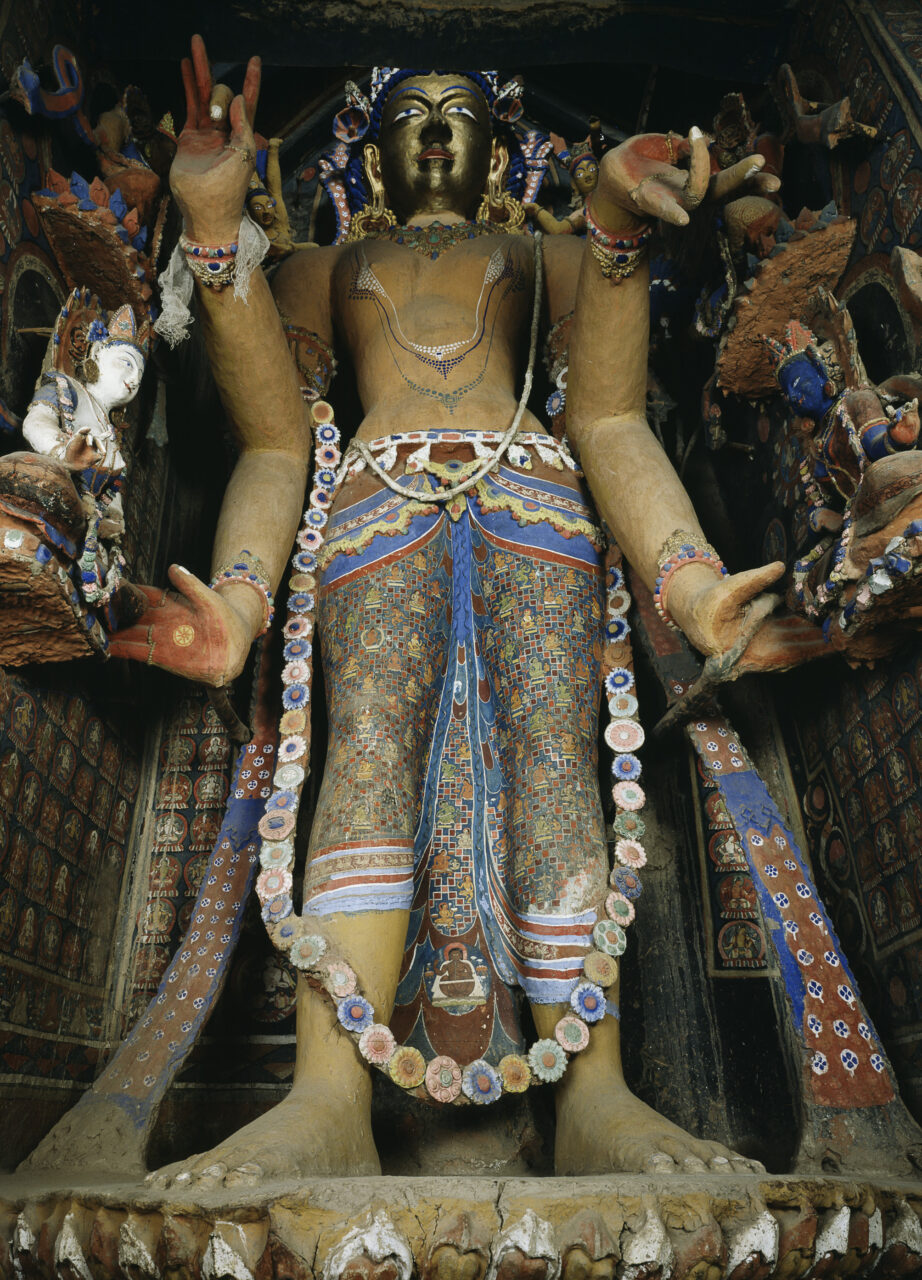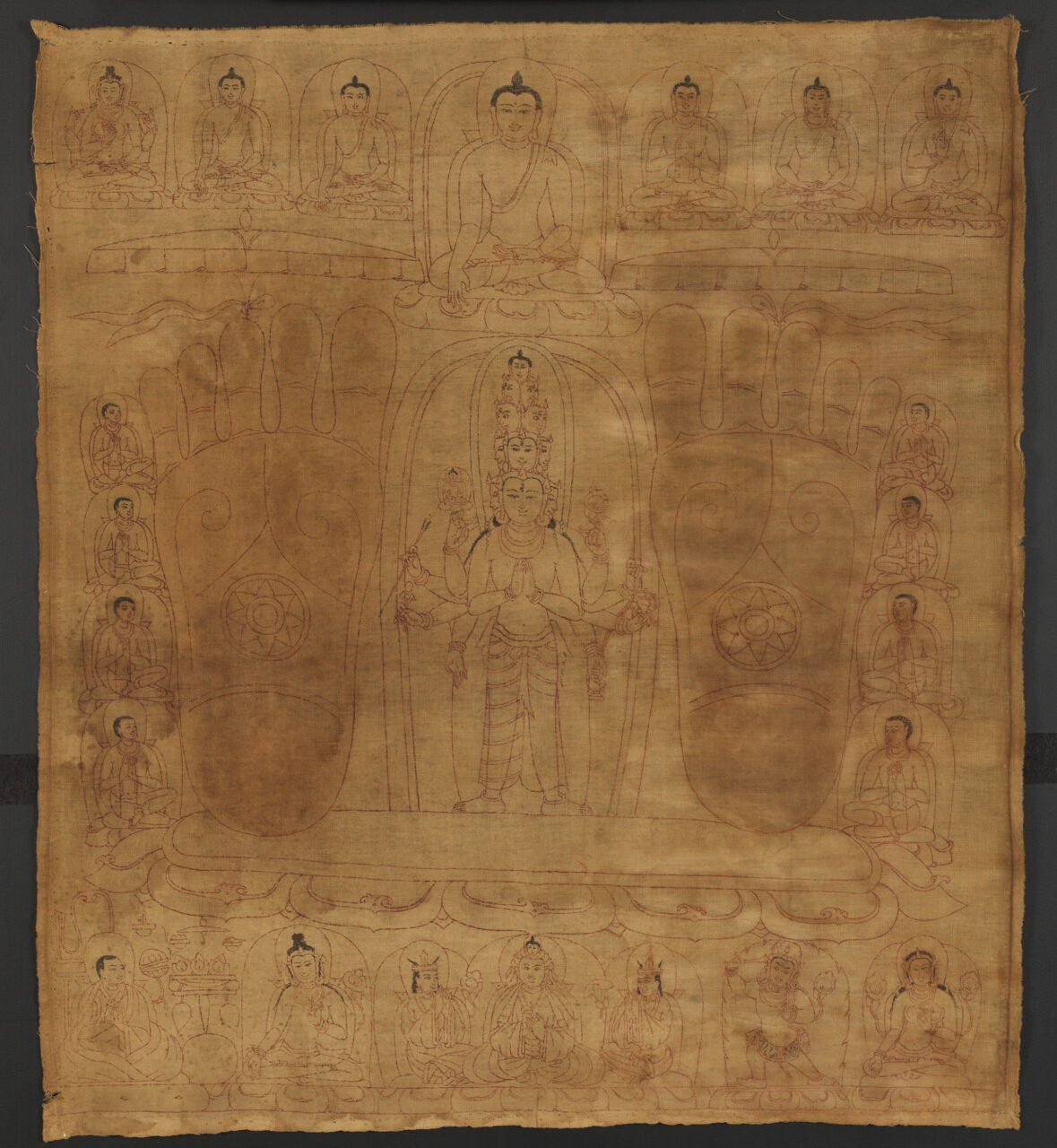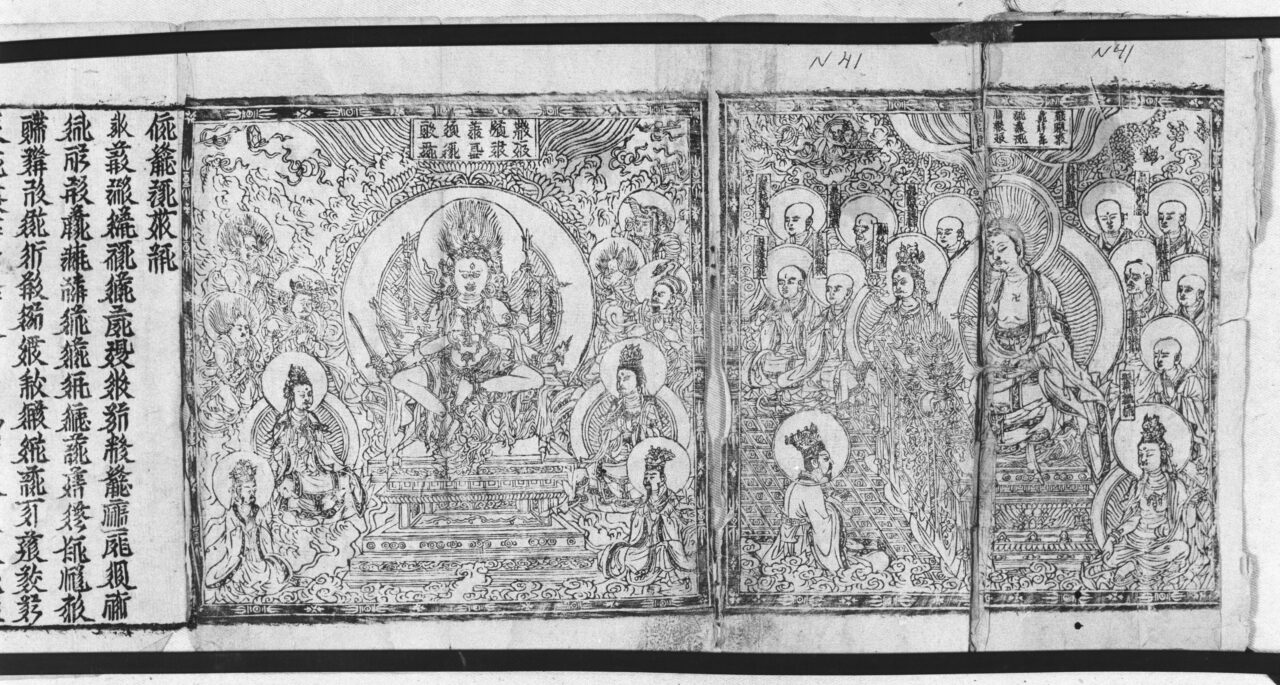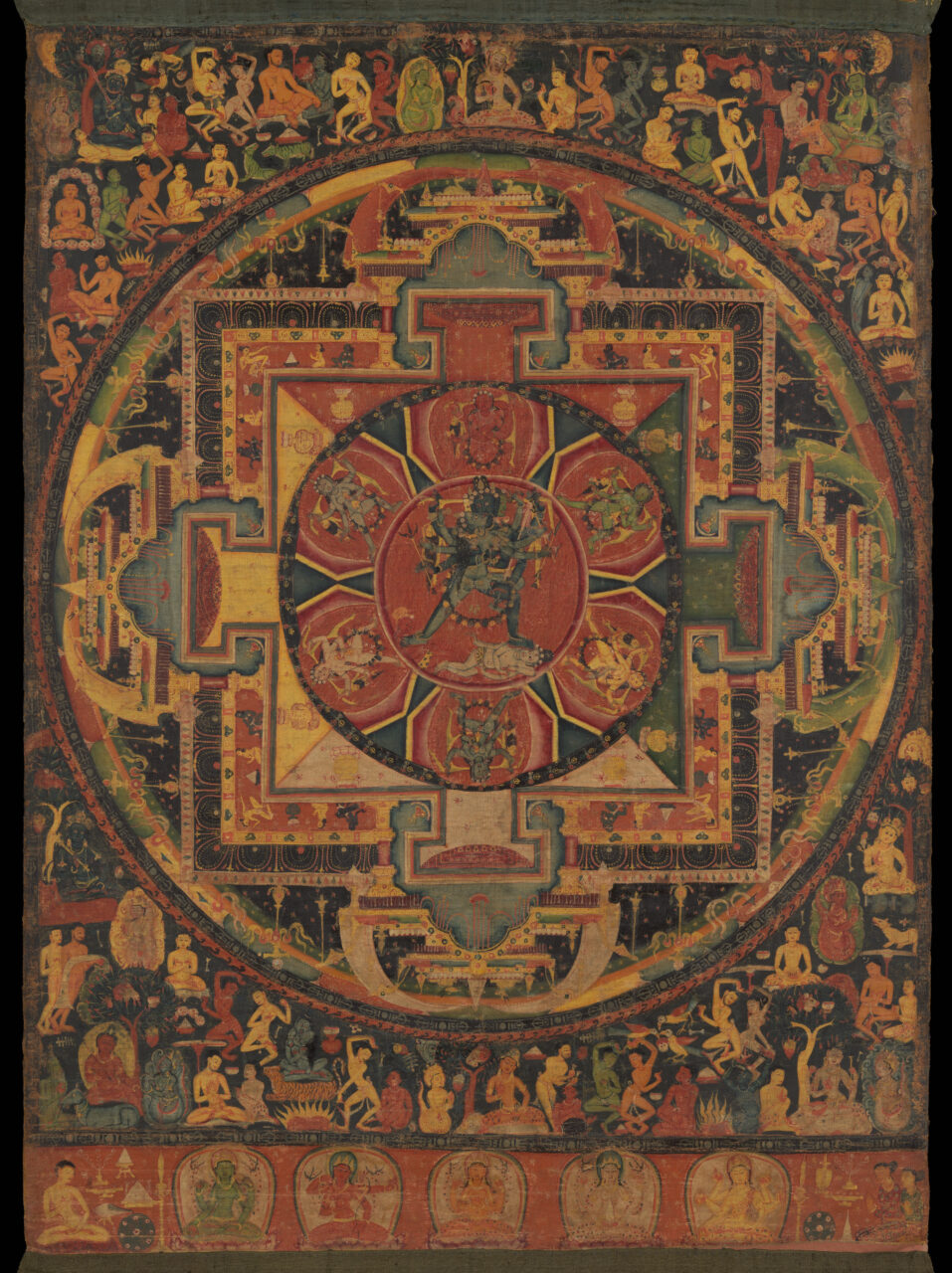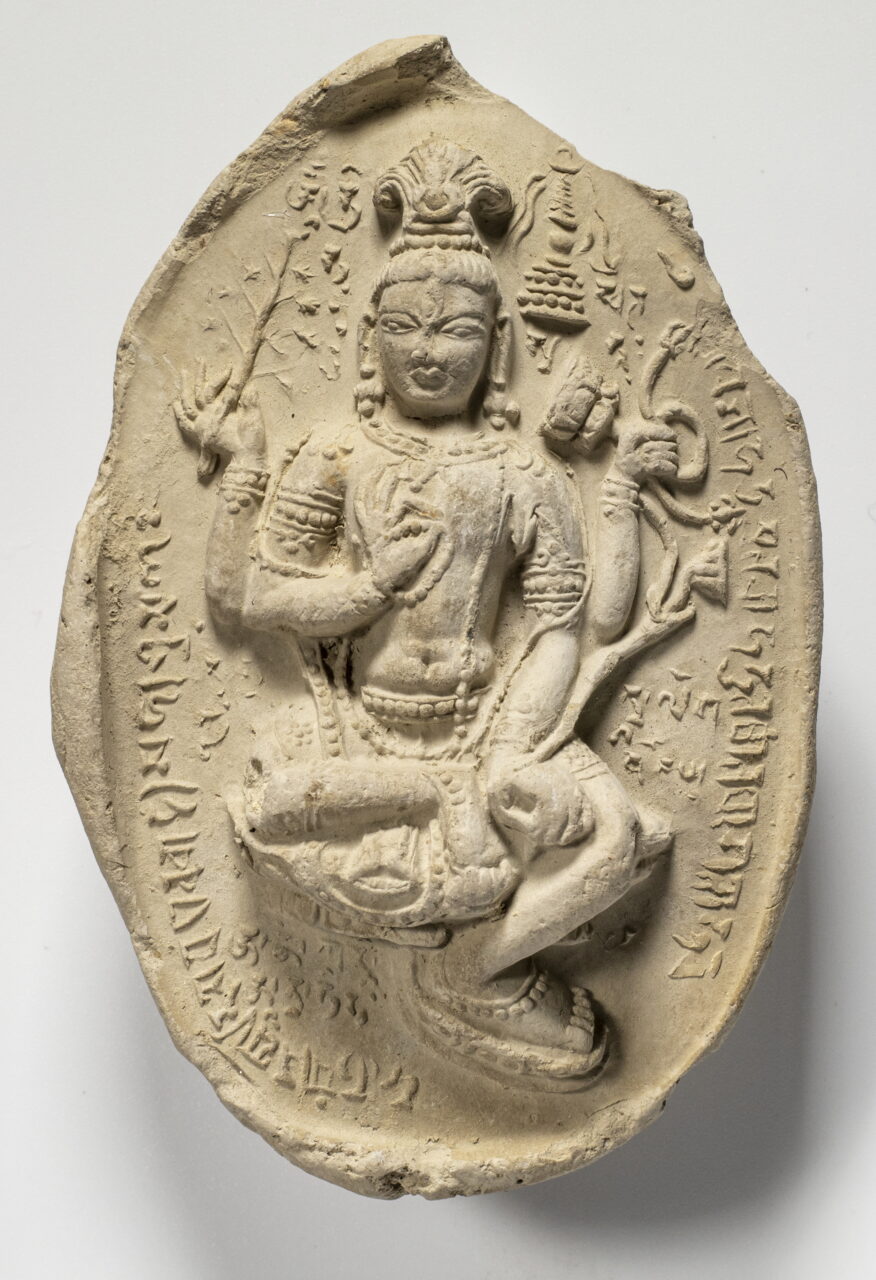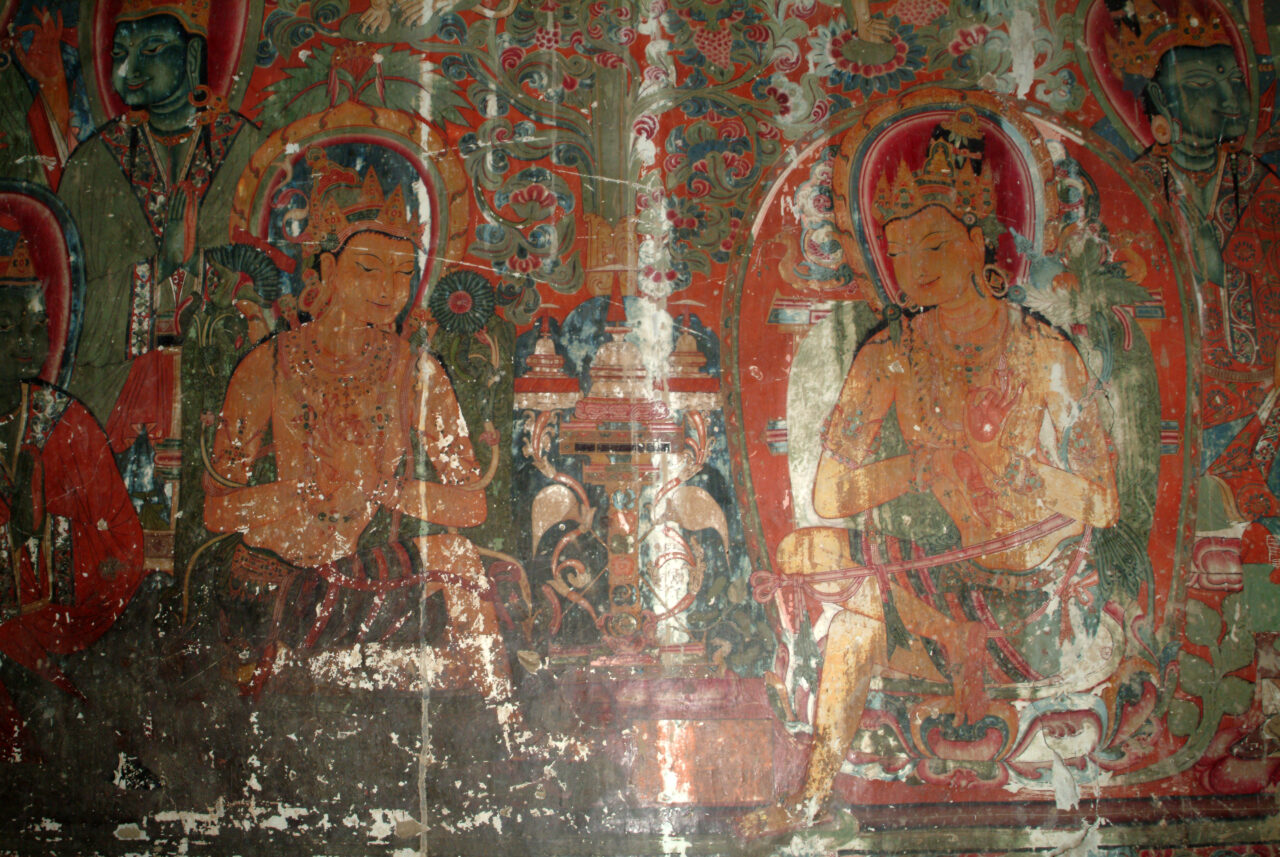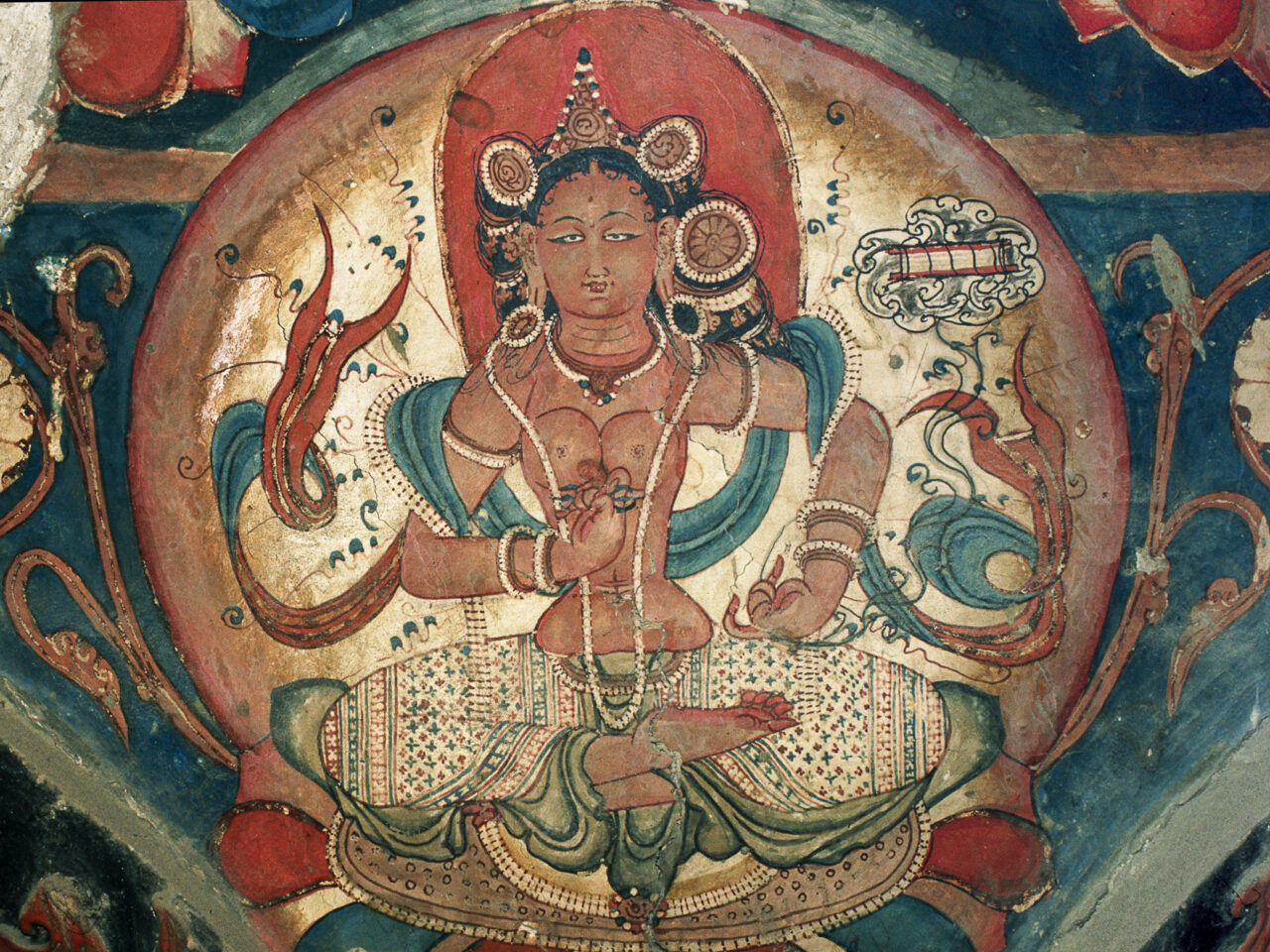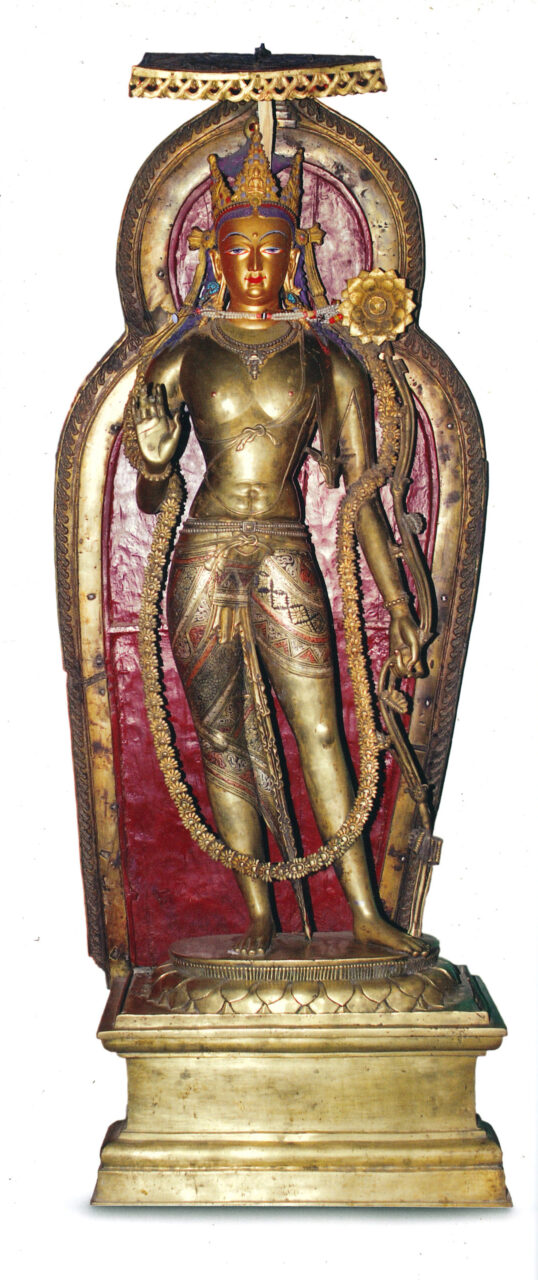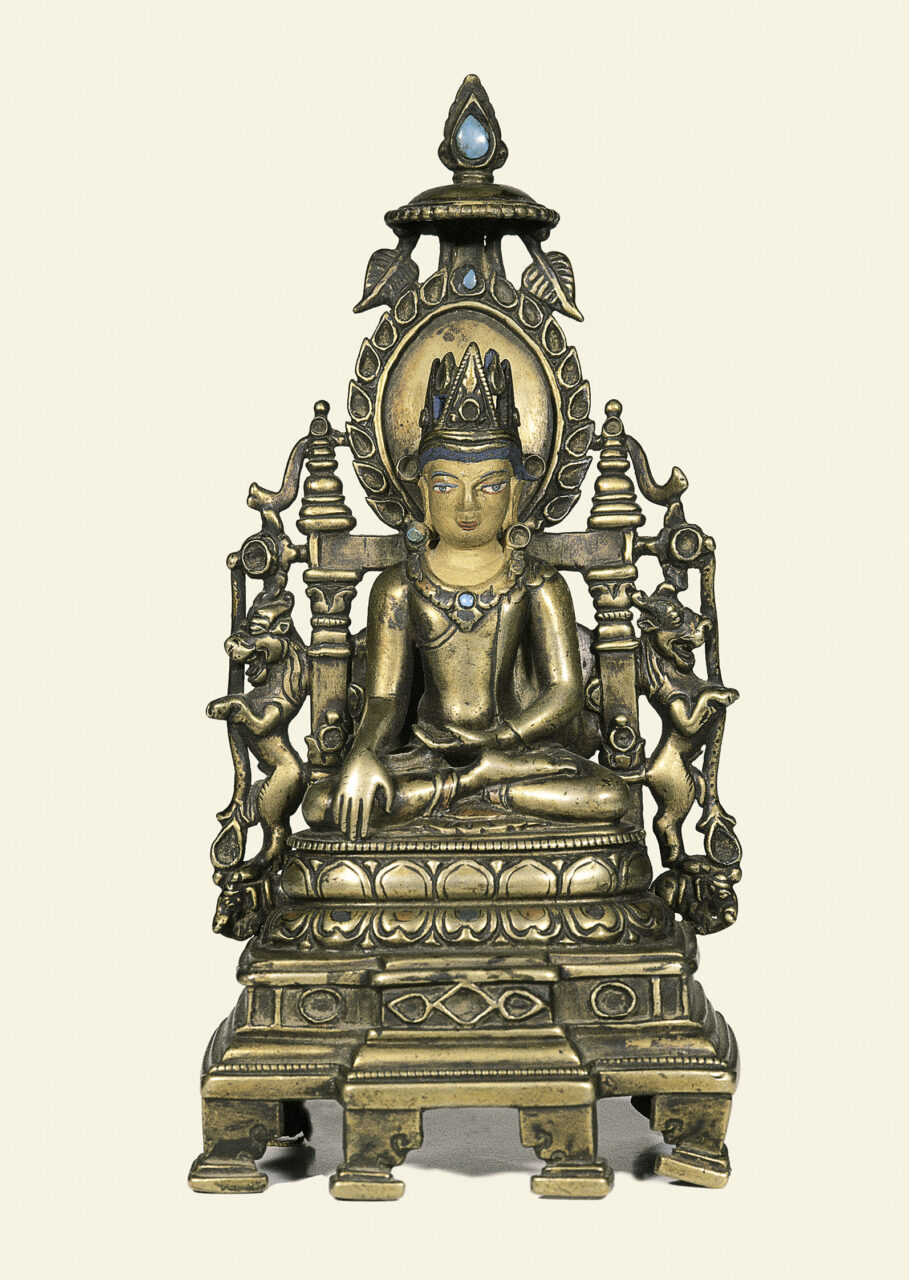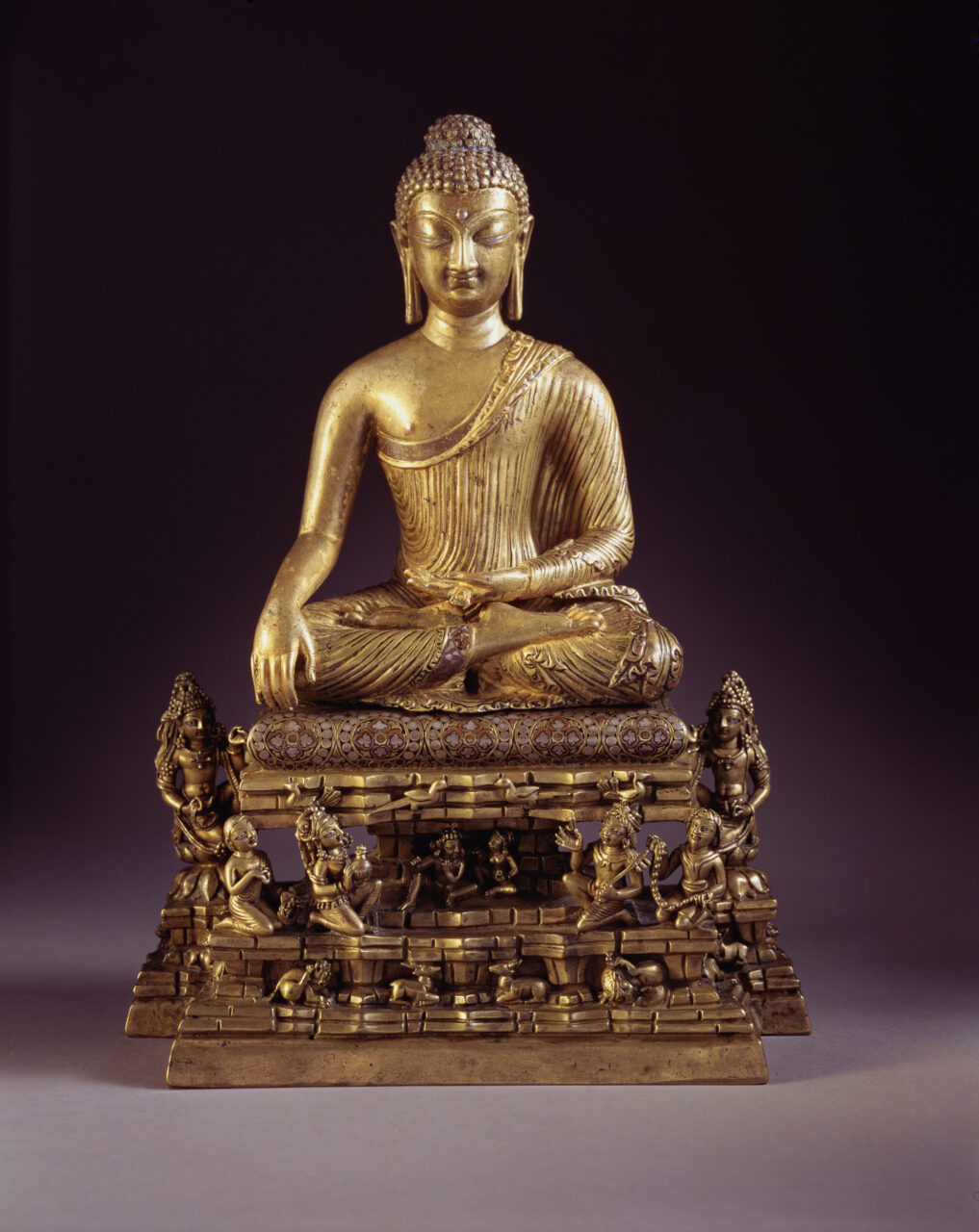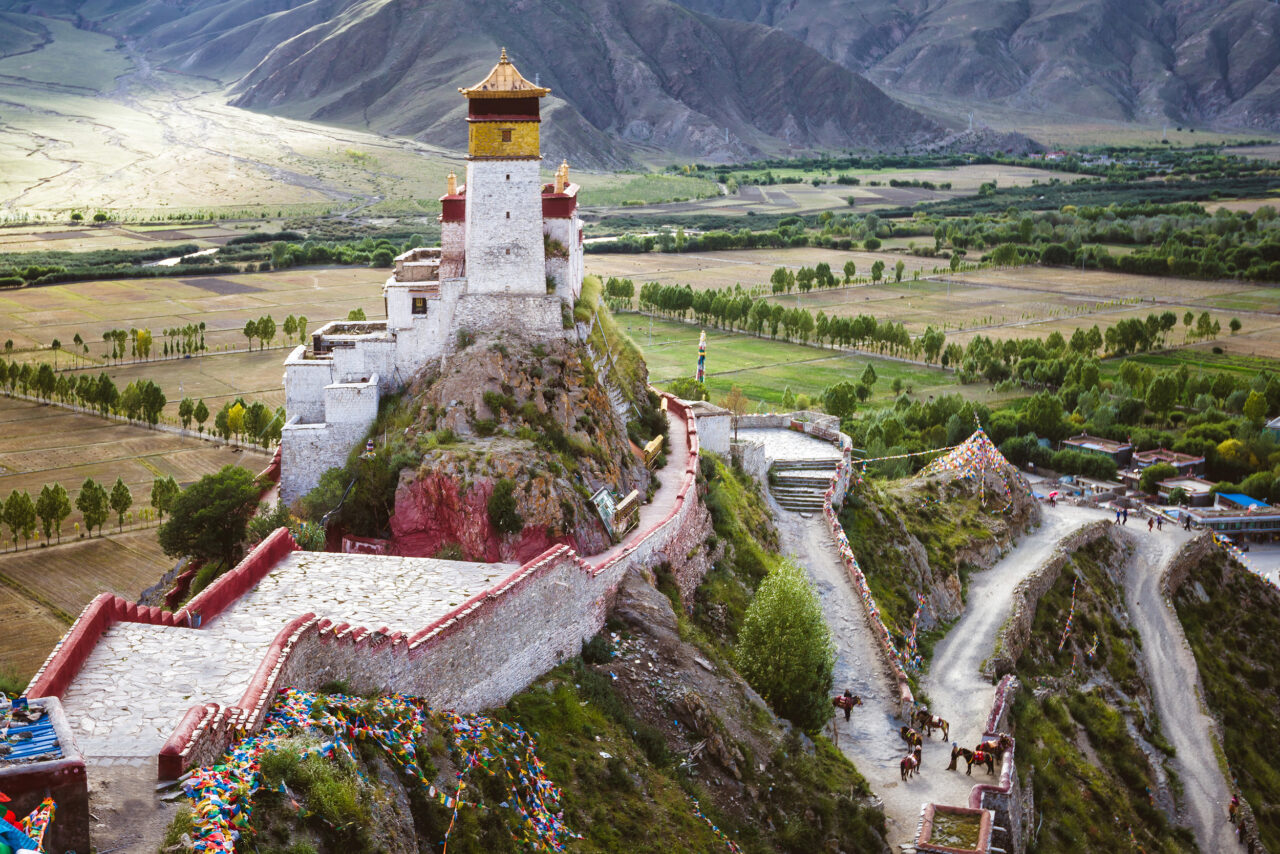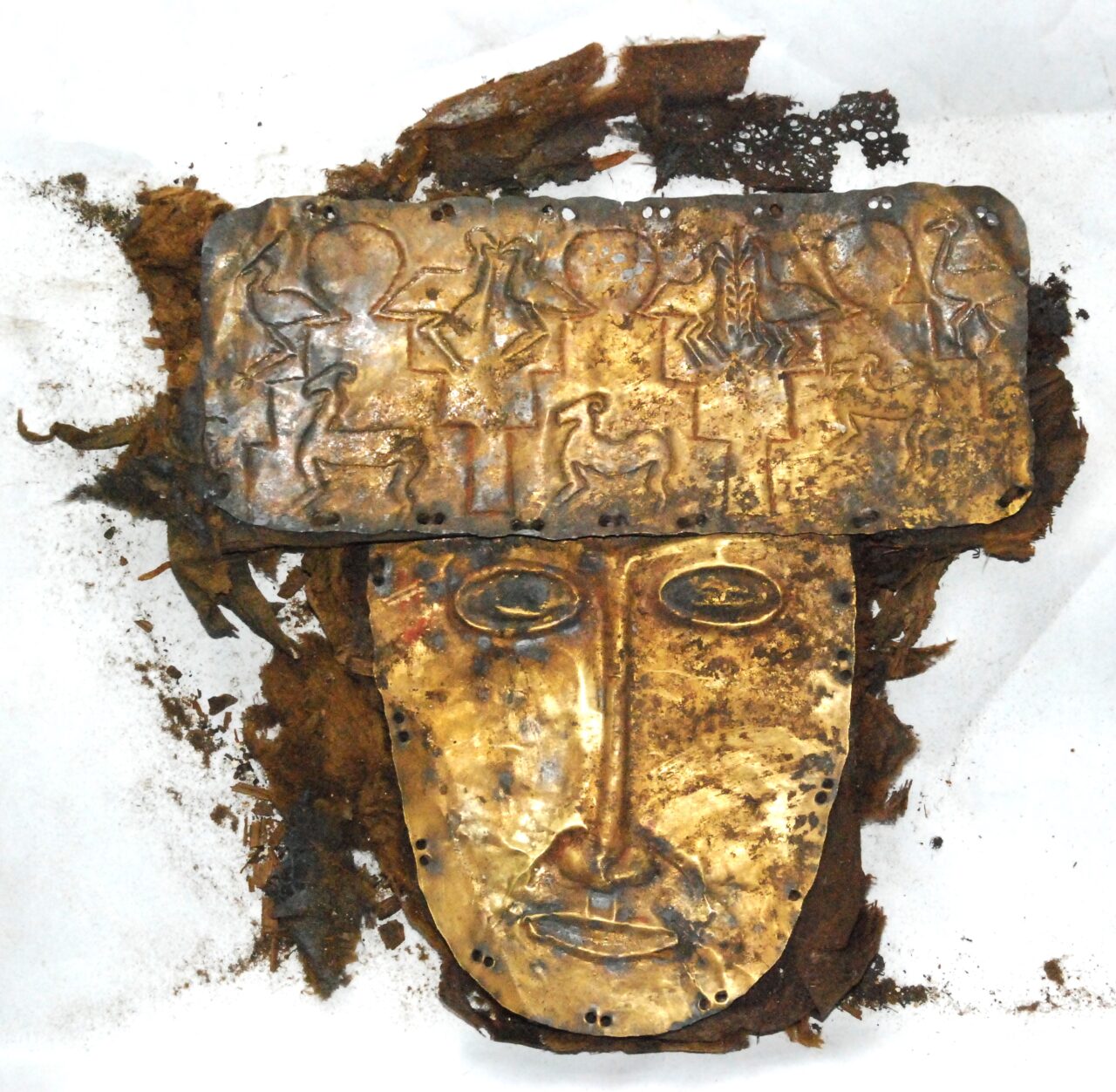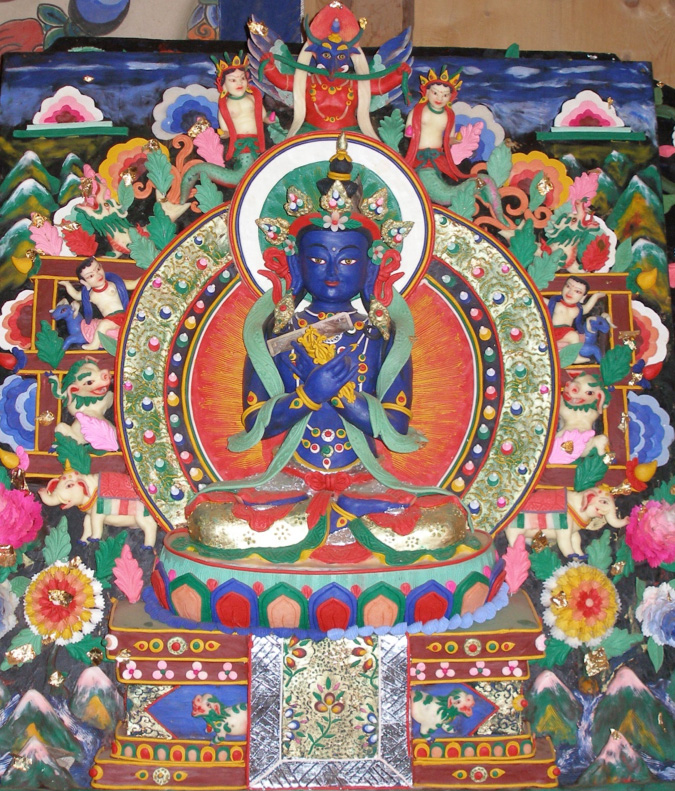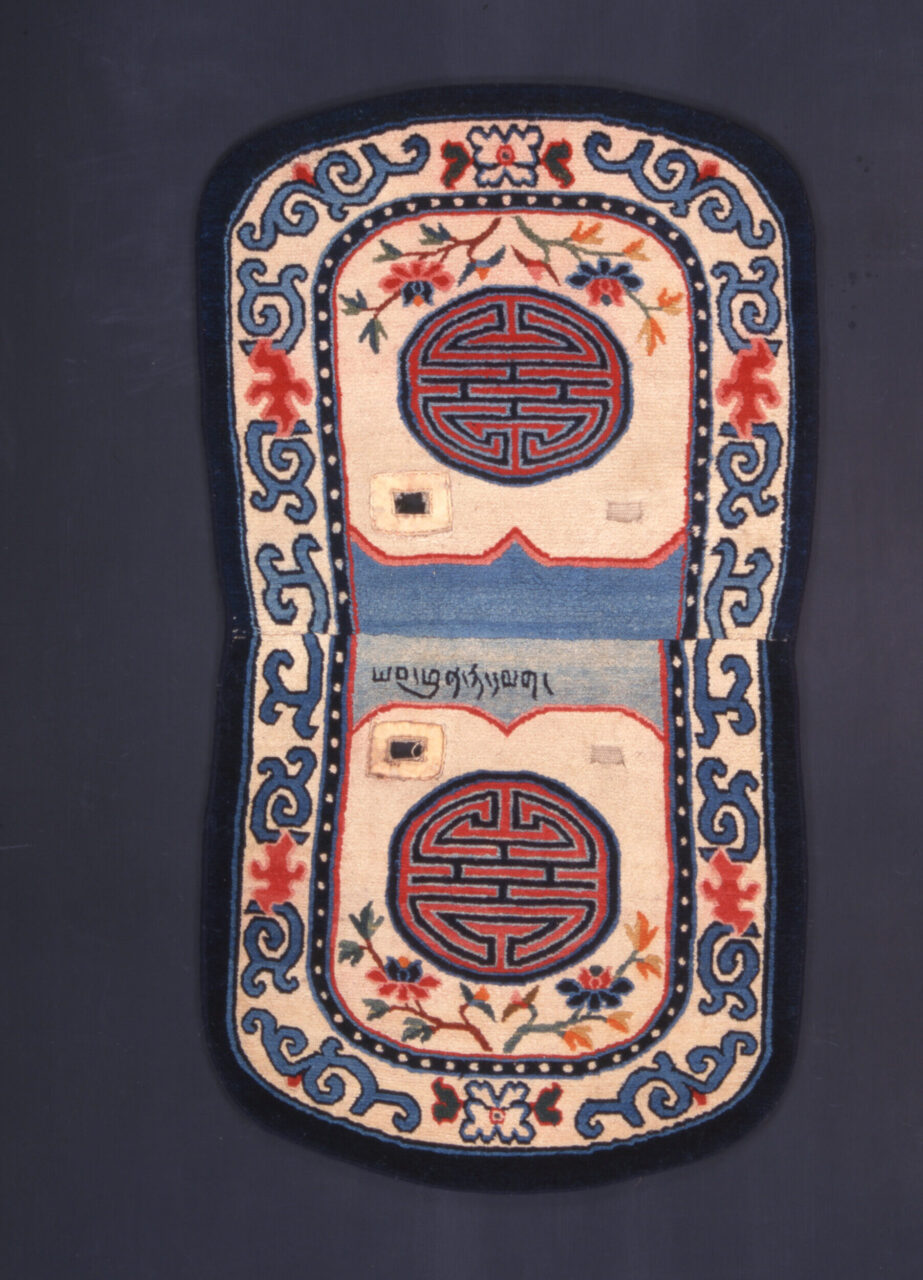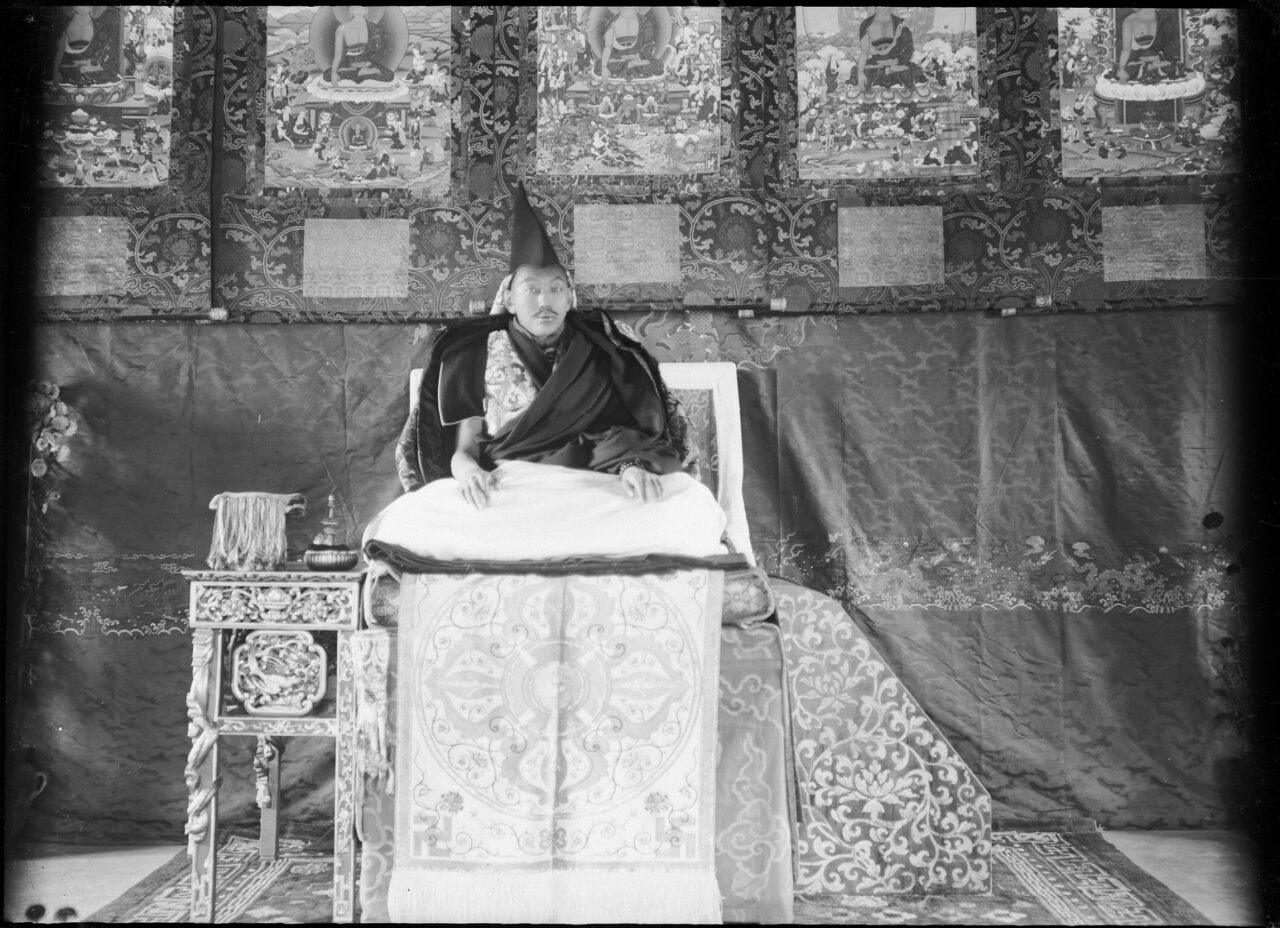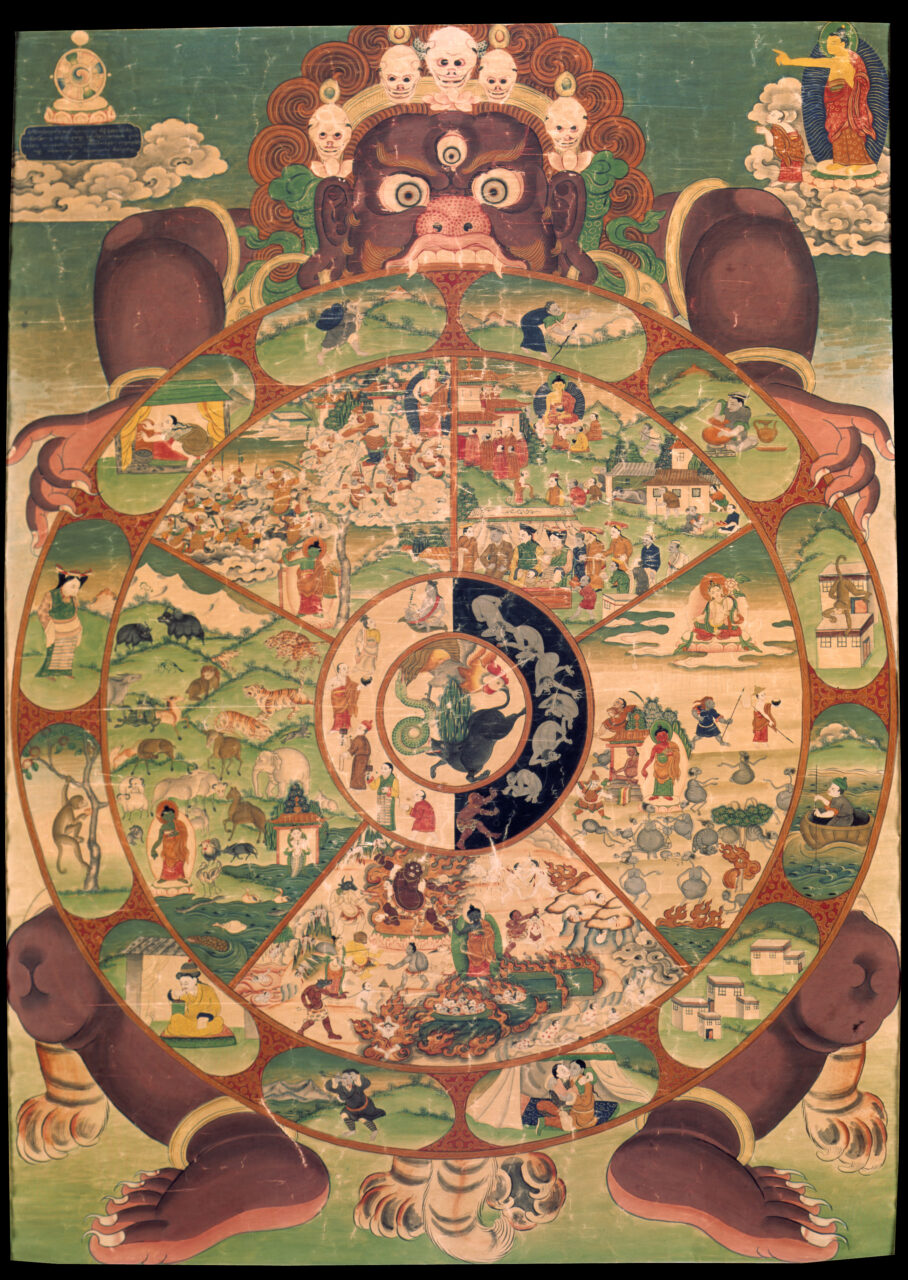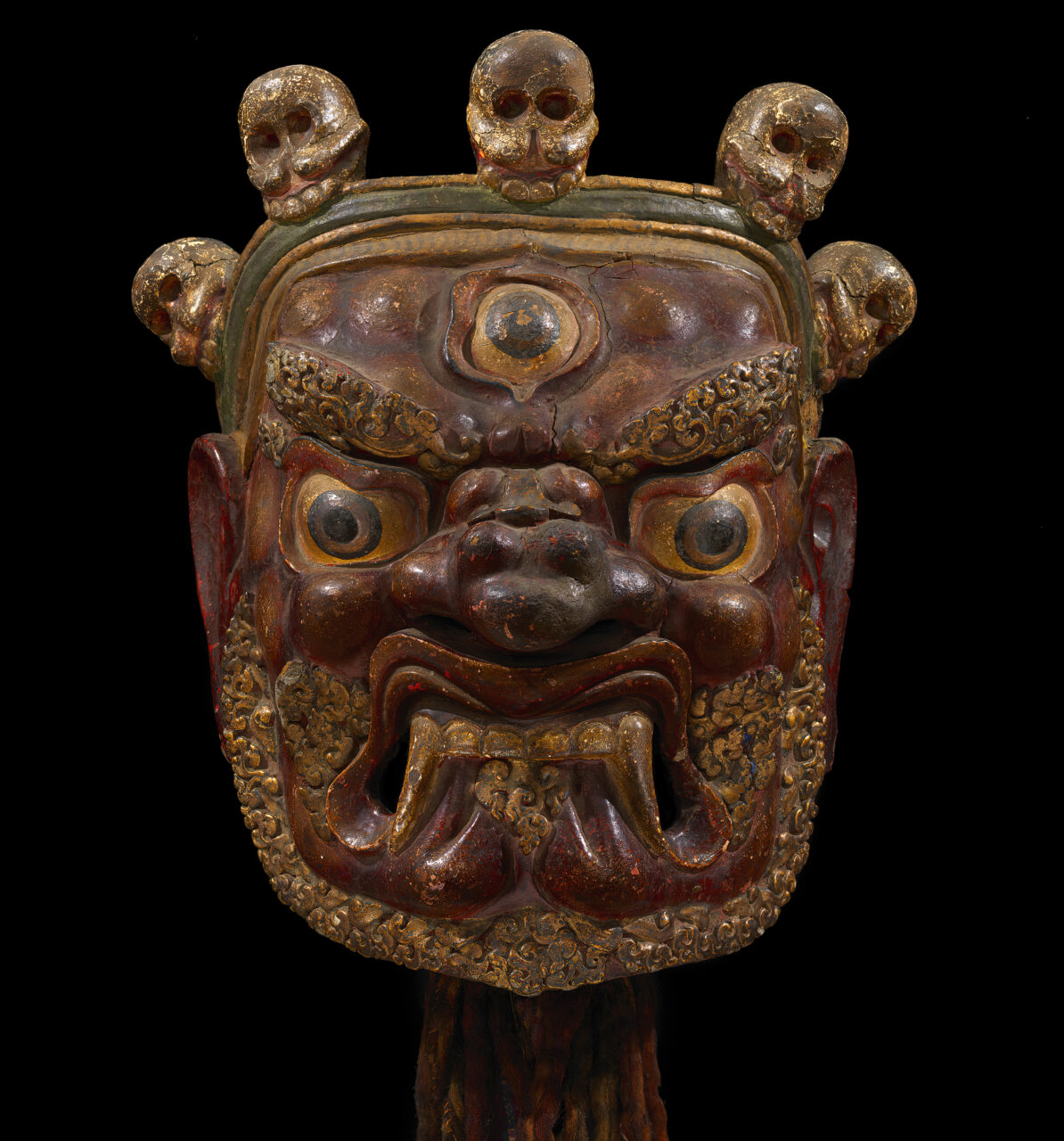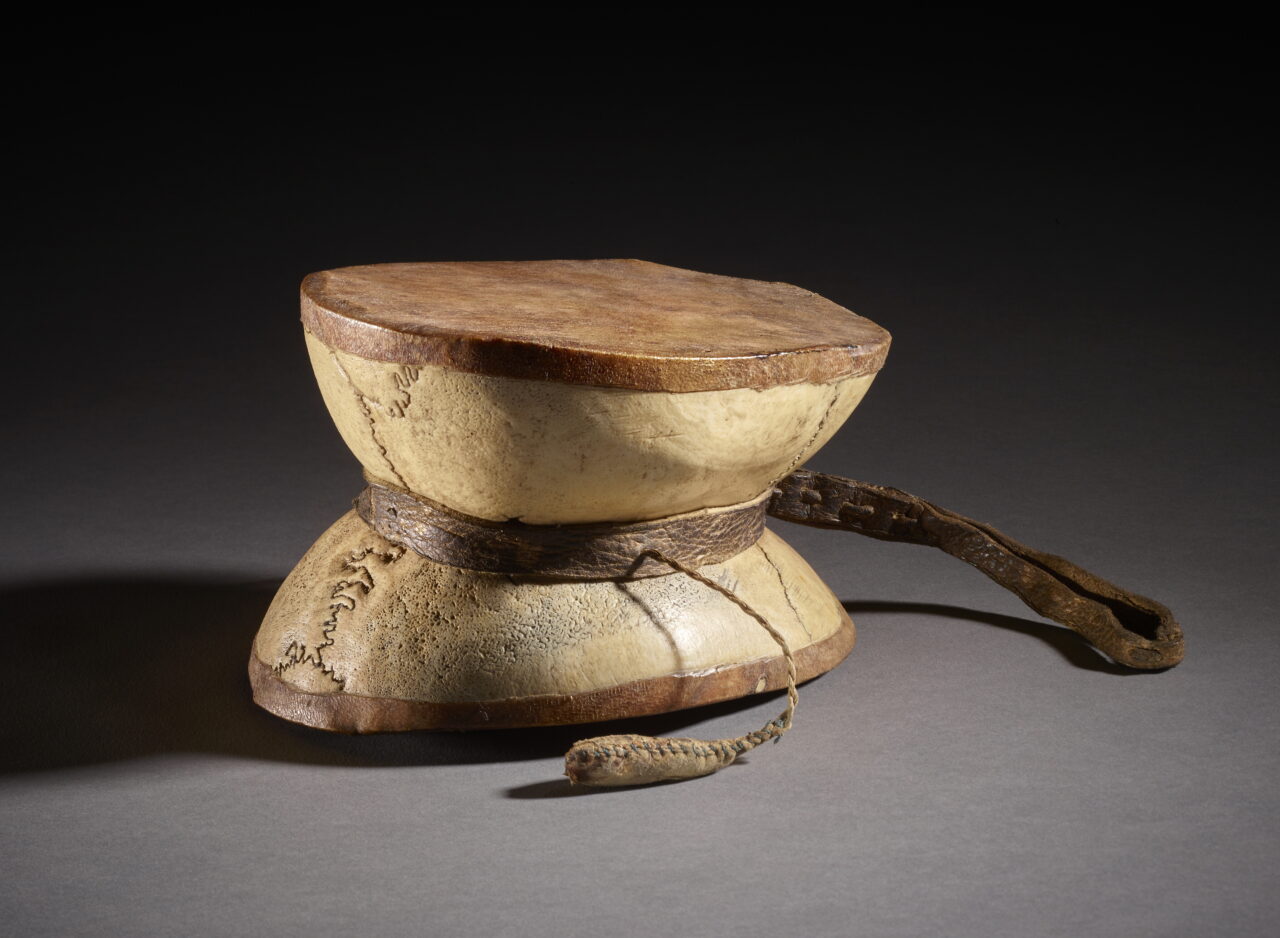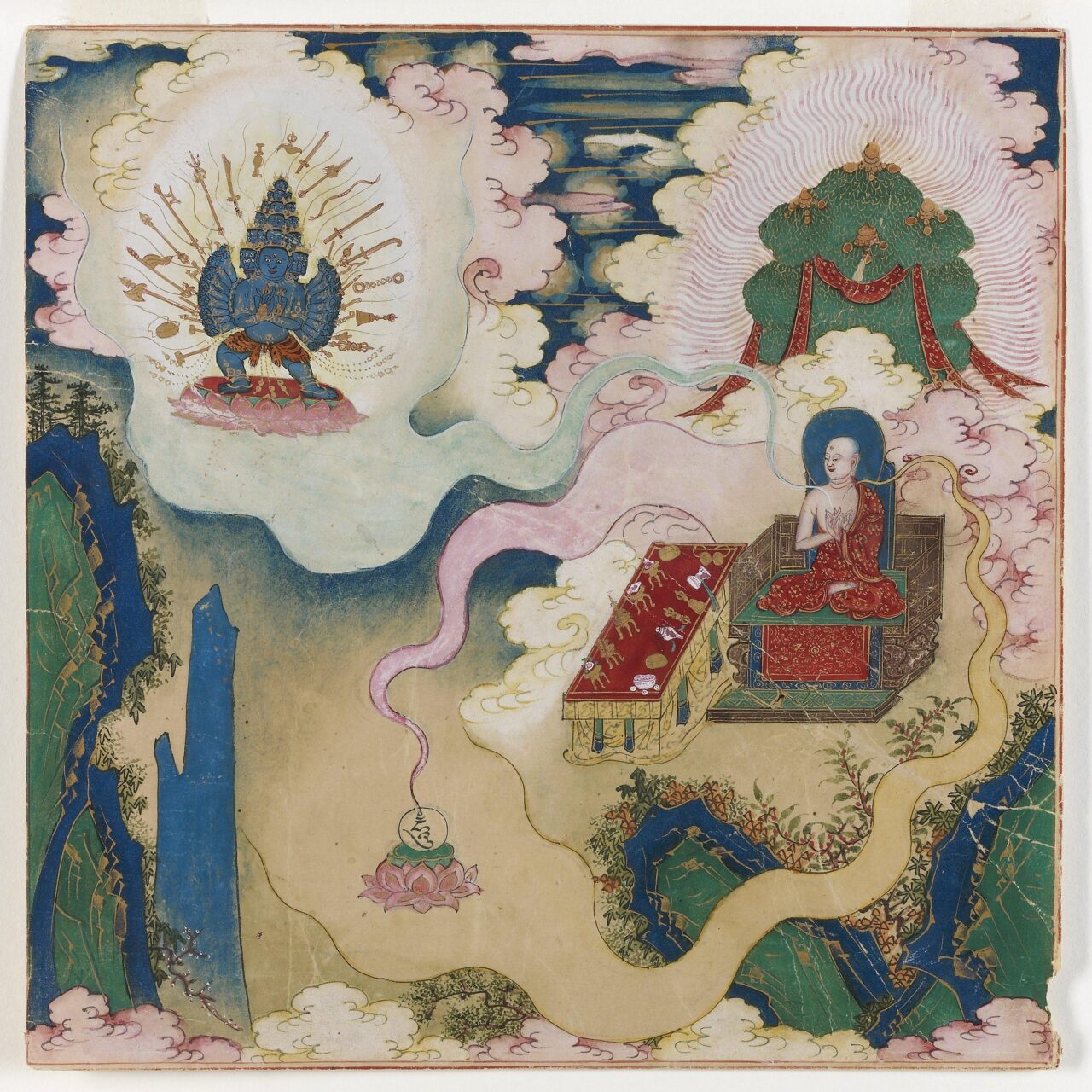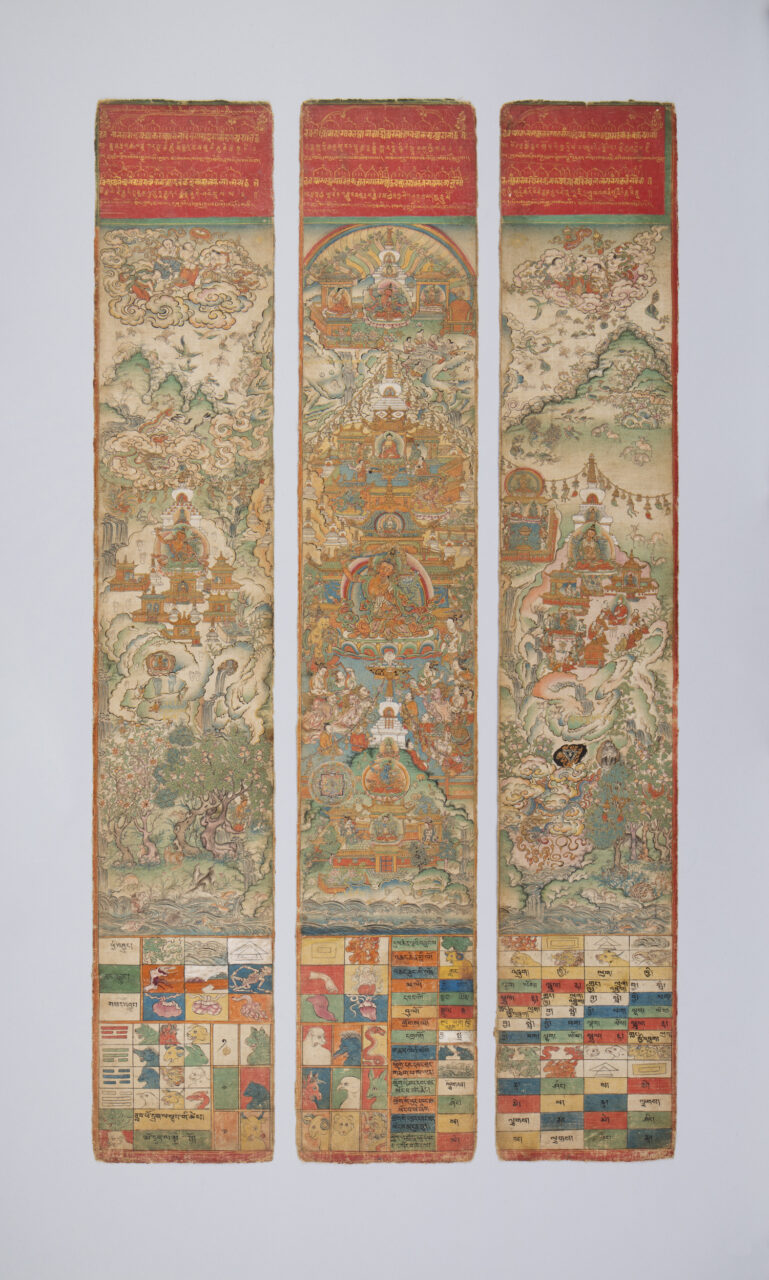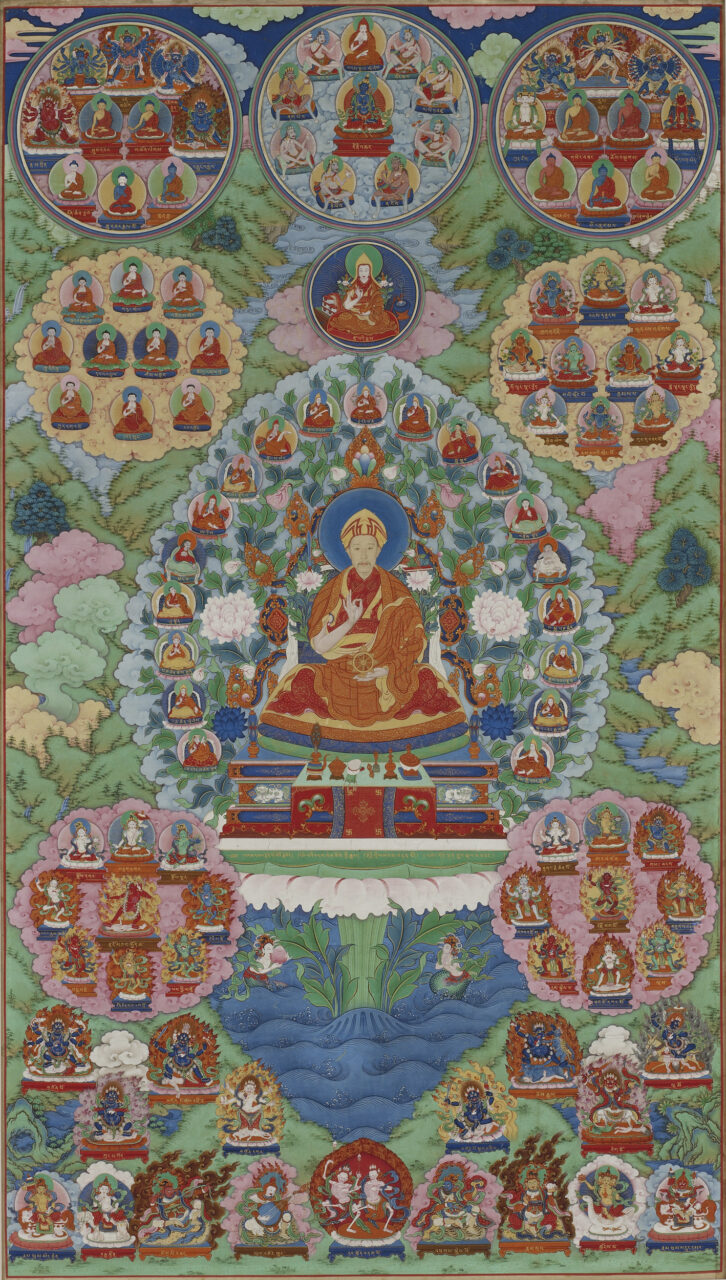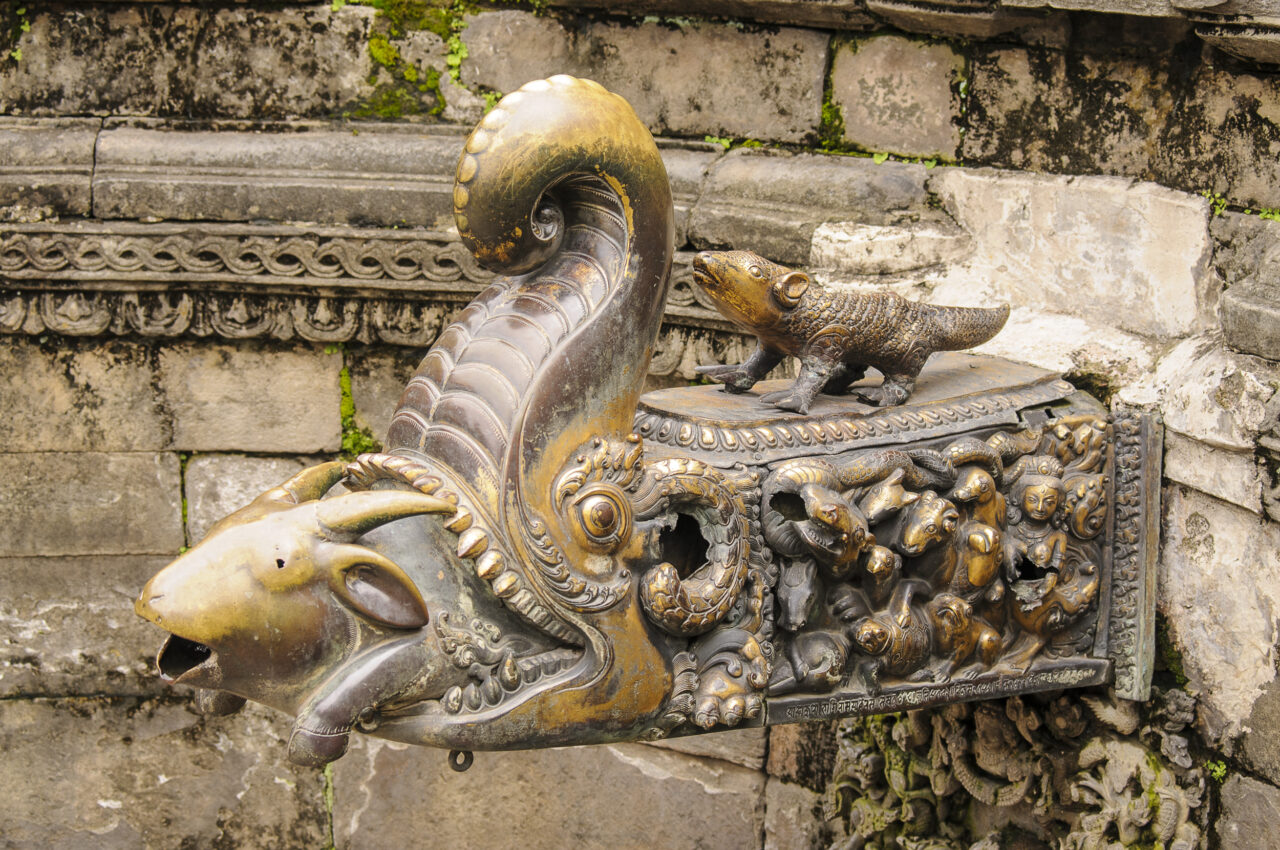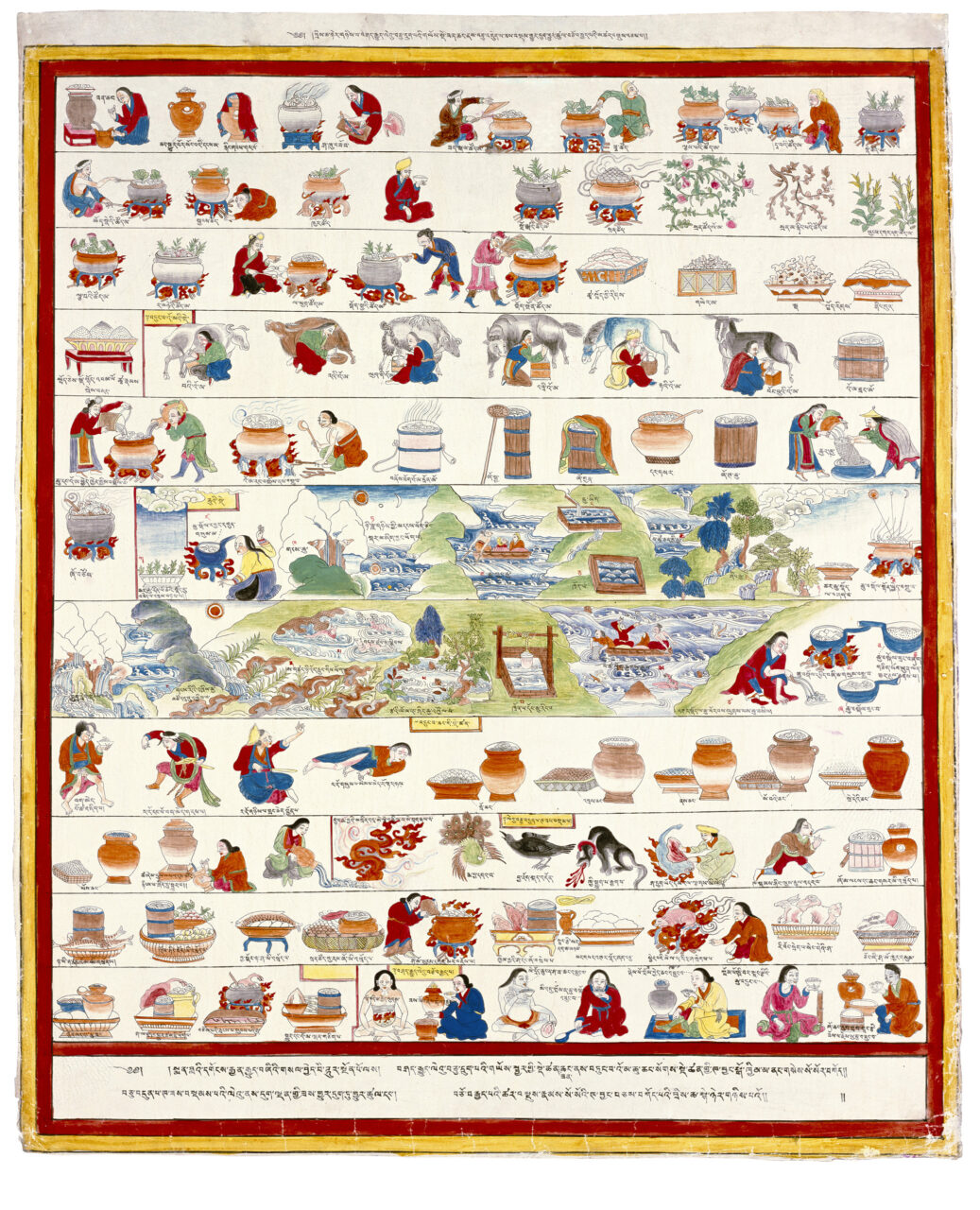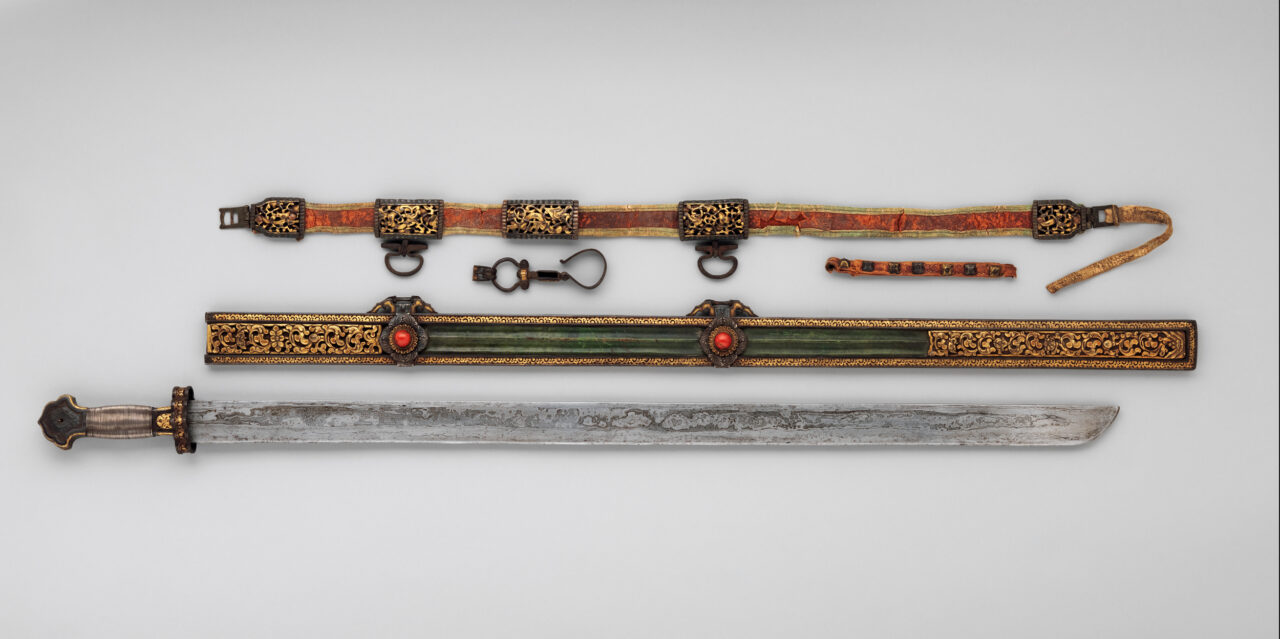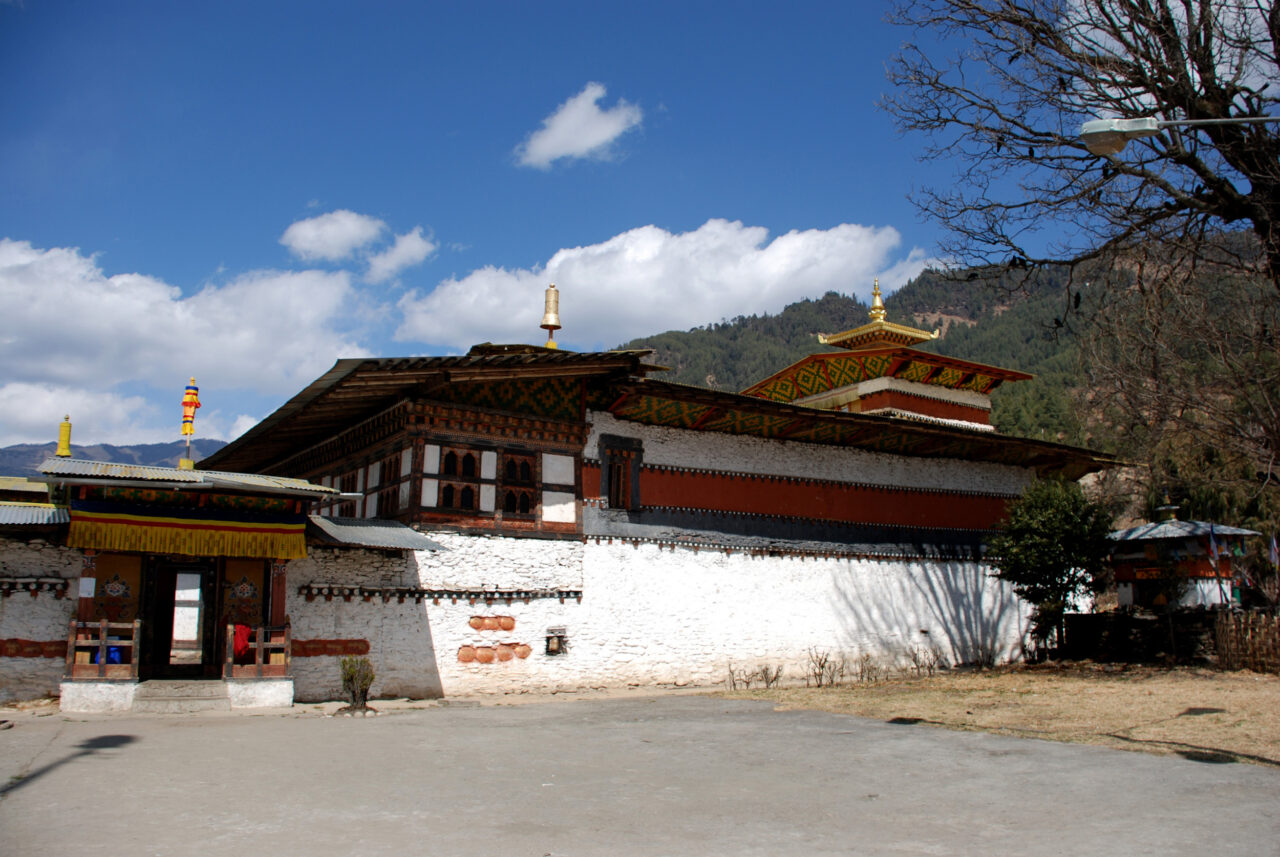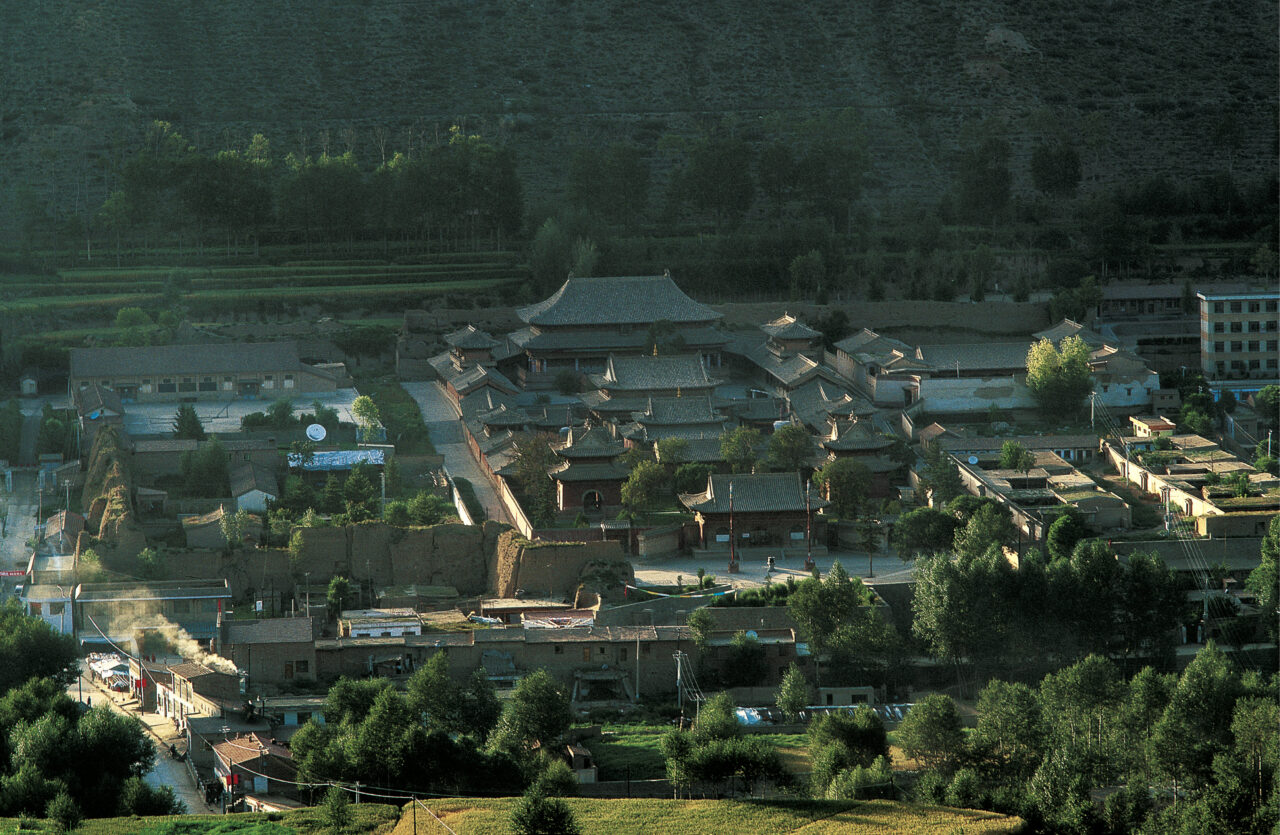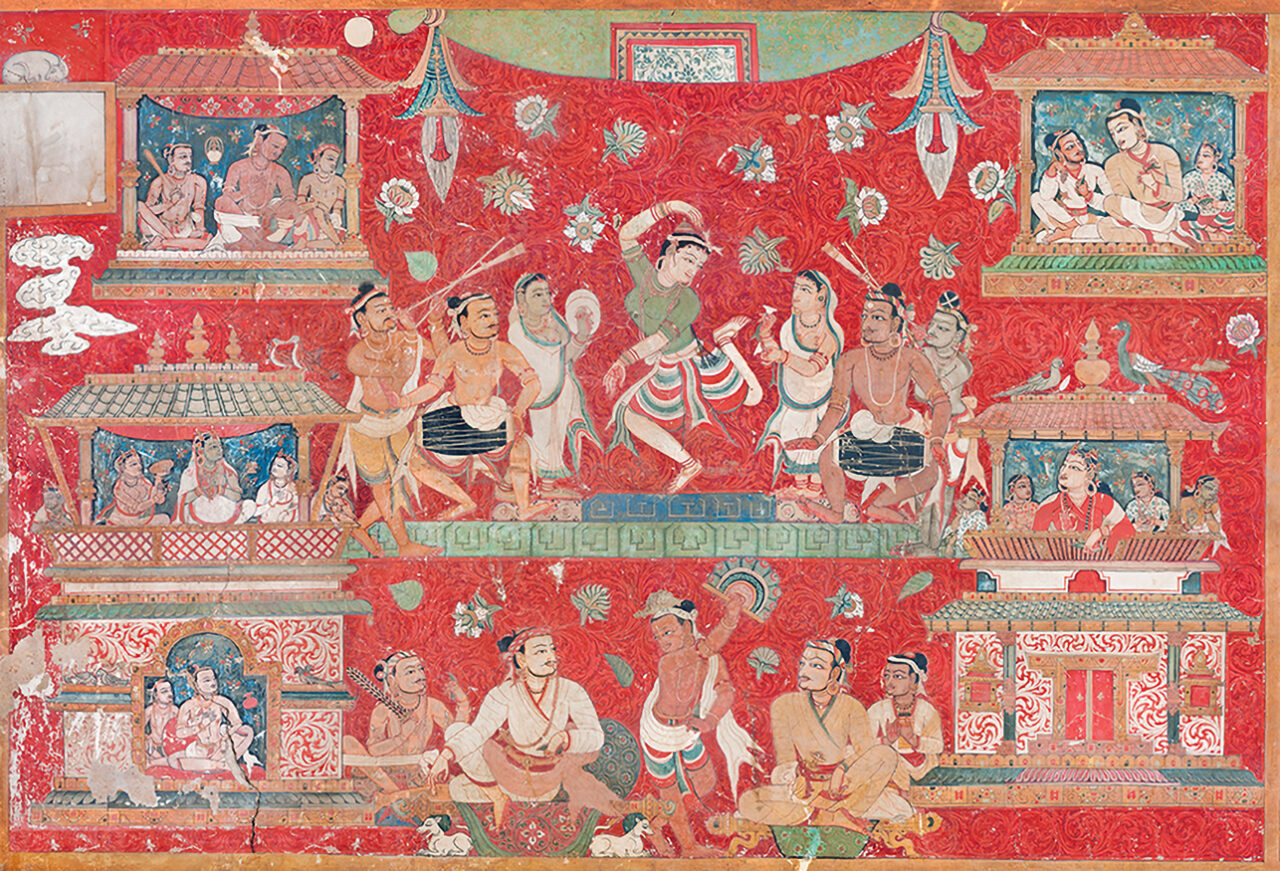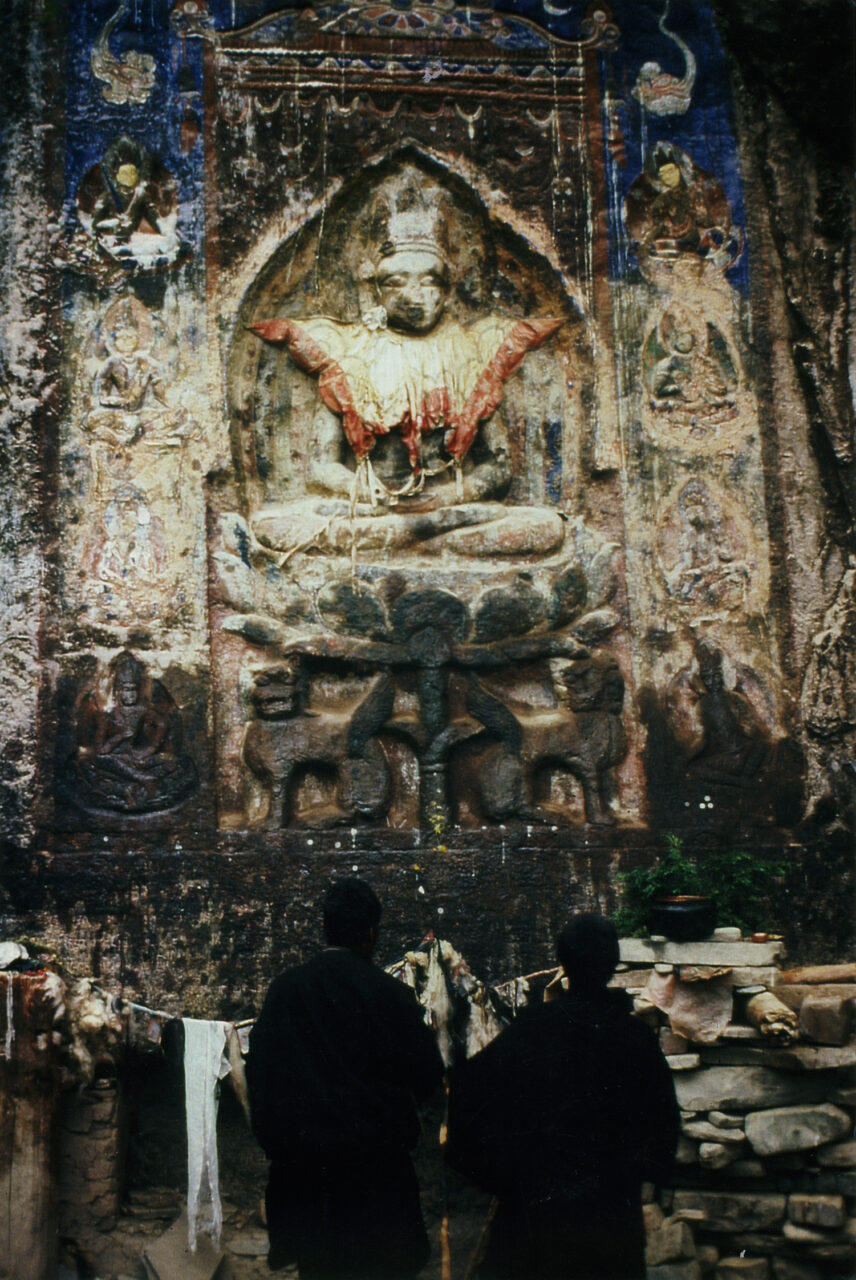Circumambulation means walking around something. Himalayan Buddhists often circumambulate as a form of veneration and generate/accrue merit by walking in a clockwise direction around stupas, monasteries, or sacred mountains. Bonpos do the same thing, except counter-clockwise.
The Dalai Lamas are a tulku lineage that has played a central role in Tibetan history for the last five hundred years. In 1577 a Mongol khan gave the Geluk monk Sonam Gyatso (1543–1588) the title “Dalai Lama,” combining the Mongolian word for ocean, dalai (a reference to the depth of his knowledge), and the Tibetan word for guru, lama. Later, two previous incarnations were retroactively identified. The fifth incarnation, Ngawang Gyatso (1617–1682), allied with another Mongol khan to unite most of the Tibetan Plateau, forming the Ganden Podrang government that would govern Tibet until 1959. Since the Communist takeover, the current Fourteenth Dalai Lama has lived in exile at Dharamshala in India. The Dalai Lamas are understood to be emanations of the bodhisattva Avalokiteshvara.
Tantra was a religious movement in India around the fifth to seventh centuries, and its practices are part of Buddhism and Hinduism. The word tantra also refers to texts which transmit tantric practices. In Buddhism, tantra is also called Vajrayana, “The Vajra Vehicle.” Tantric ritual and art are characterized by deity yoga, mandalas, mantras, abhisheka (initiation), wrathful deities, and ritual sexual union. In Hinduism, tantrism was often associated with the worship of Shiva and various goddesses (shakti). A practitioner of tantra is called a “tantrika.” Tantra is also a genre of texts that have been variously categorized. Most common is the division of tantras into four categories: Kriya Tantra, Charya Tantra, Yoga Tantra, and Highest Yoga Tantra.
Historically, Tibetan Buddhism refers to those Buddhist traditions that use Tibetan as a ritual language. It is practiced in Tibet, Mongolia, Bhutan, Ladakh, and among certain groups in Nepal, China, and Russia and has an international following. Buddhism was introduced to Tibet in two waves, first when rulers of the Tibetan Empire (seventh to ninth centuries CE), embraced the Buddhist faith as their state religion, and during the second diffusion (late tenth through thirteenth centuries), when monks and translators brought in Buddhist culture from India, Nepal, and Central Asia. As a result, the entire Buddhist canon was translated into Tibetan, and monasteries grew to become centers of intellectual, cultural, and political power. From the end of the twelfth century, Tibetans were exporting their own Buddhist traditions abroad. Tibetan Buddhism integrates Mahayana teachings with the esoteric practices of Vajrayana, and includes those developed in Tibet, such as Dzogchen, as well as indigenous Tibetan religious practices focused on local gods. Historically major traditions of Tibetan Buddhism are Nyingma, Kagyu, Sakya, and Geluk.
The Tibetan Government-in-Exile is a reconstituted form of the Ganden Podrang government that now resides in Dharamshala, India. In 1951, Tibet was formally incorporated into the People’s Republic of China under Mao Zedong (1893–1976). In 1959, an uprising against the Chinese communist rule led to the Fourteenth Dalai Lama and surviving members of the Tibetan government flight to India, where they rebuilt a government-in-exile, with a democratically elected parliament (Tib. kashag) and a president. In 2011, The Dalai Lama formally relinquished his political leadership role in Tibetan exile government. This government represents the roughly 150,000 Tibetans who form an exiled diaspora in India, Nepal, and worldwide.




